Sand martins on the island of Poel are a fascinating sight that I had the chance to experience during a bike tour in May. In my blog post, I take a closer look at the lives of these special birds and invite you to explore the beautiful landscapes of Poel. Along the way, I also encountered many other bird species whose songs filled the natural surroundings. Enjoy reading and discovering this unique natural oasis!
The island of Poel and its bird life
Recently, someone asked me what my most beautiful birdwatching experience has been so far. Wow – what a tough question! Without hesitation, I replied, “That’s really hard to say.”
How can you possibly choose just one moment from so many wonderful encounters with birds? How could I decide between the common nightingales (left photo), singing their hearts out on warm Berlin nights in Prenzlauer Berg, and the Eurasian skylarks (right photo), trilling high above the wide-open spaces of Tempelhofer Feld?
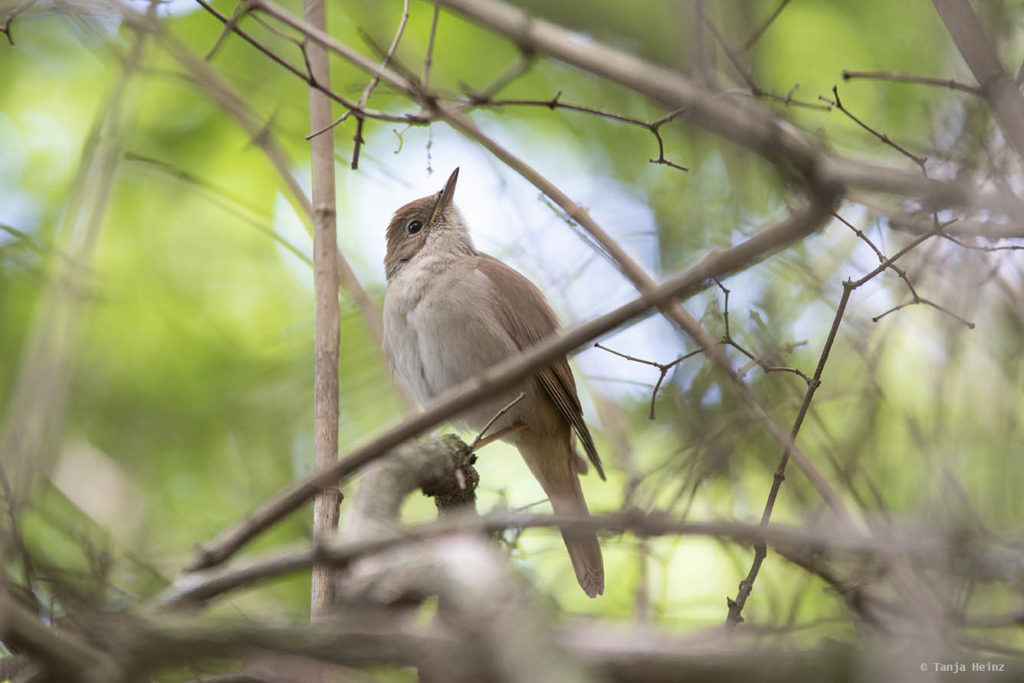
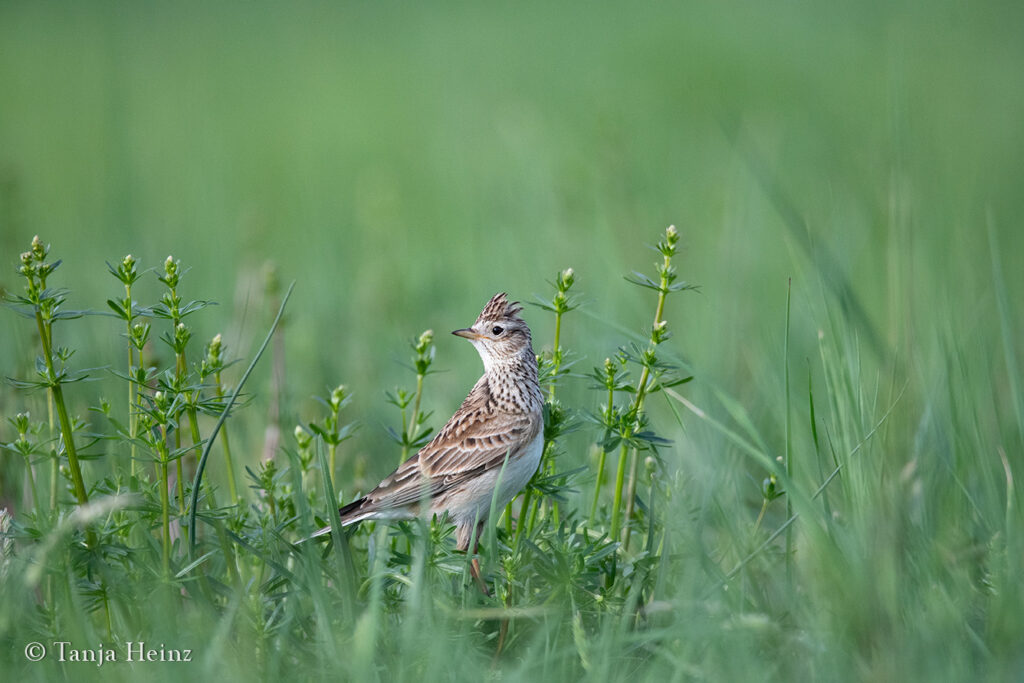
And what about the impressive seabirds – the northern gannets, puffins (top left photo), razorbills (top right photo), and guillemots on Heligoland or in Iceland? Not to mention the colorful, enchanting birds of Brazil (bottom left photo: hyacinth macaw, bottom right photo: great kiskadee), which deeply impressed me during my visit to the country.


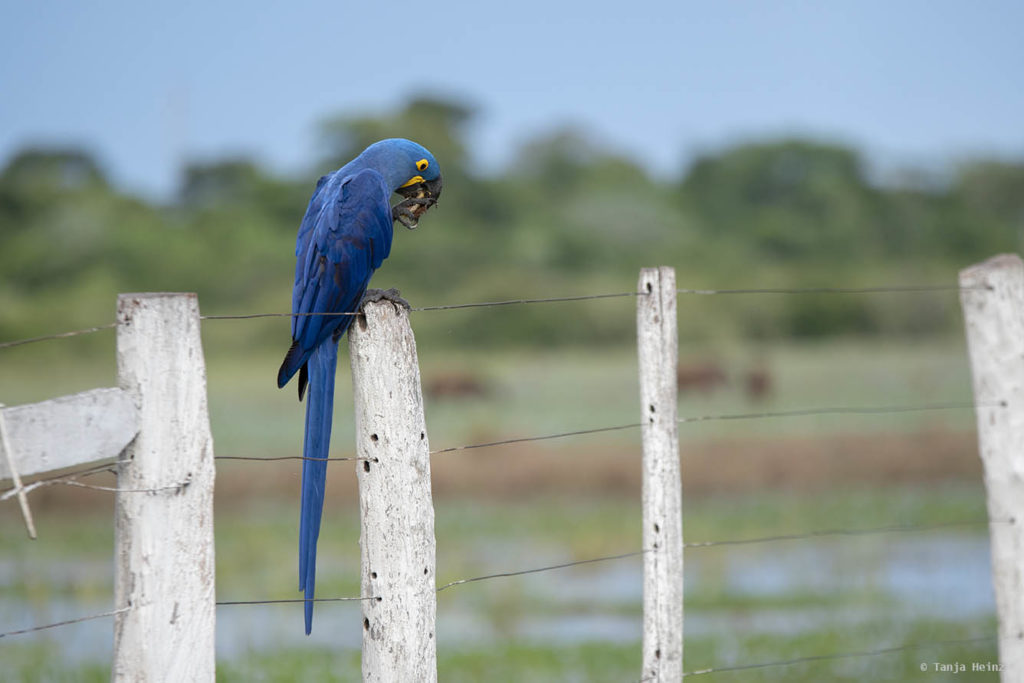
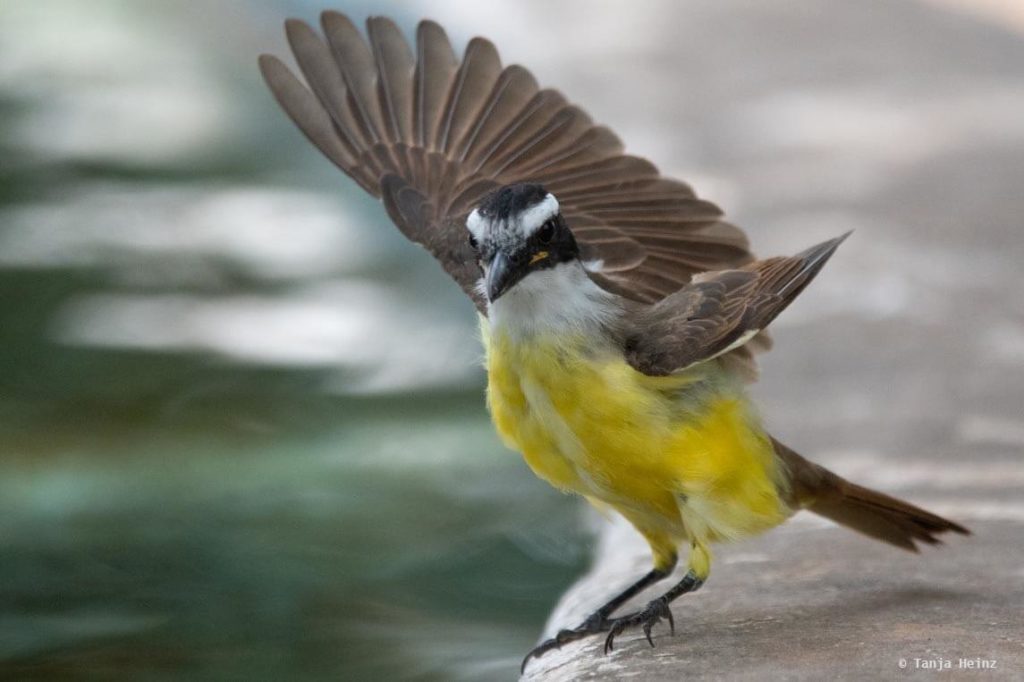
There simply wasn’t a clear answer to that question.
So I did what felt most natural in that moment: instead of choosing just one, I shared a very special experience I’d had recently – with the sand martins on the island of Poel.

And this post is all about those sand martins on the island of Poel.
But before I dive into the fascinating world of these agile little flyers, it’s worth taking a brief look at the place where they appear: Where exactly is the island of Poel? What makes it special? And what other bird species can be found there?
During my visit, I was clearly focused on the sand martins – so this part is by no means comprehensive. But I’d still like to give you a small impression of the island as I experienced it, and especially share which other birds I saw or heard along the way.
Poel lies about ten kilometers north of Wismar, right on the Baltic Sea. It’s easy to reach – even by bike. I, too, started my tour in Wismar and set off on two wheels toward this peaceful, charming island.
A bit further down, I’ll share more about my bike tour from Wismar to the island of Poel – along with a few photographic impressions captured along the way.
Even on the way to Poel, during my ride, I encountered plenty of birds.
Right at the beginning, I noticed a white wagtail, confidently strutting across the bike path, unfazed by passing traffic – constantly searching for small insects, as if it were perfectly at home there.
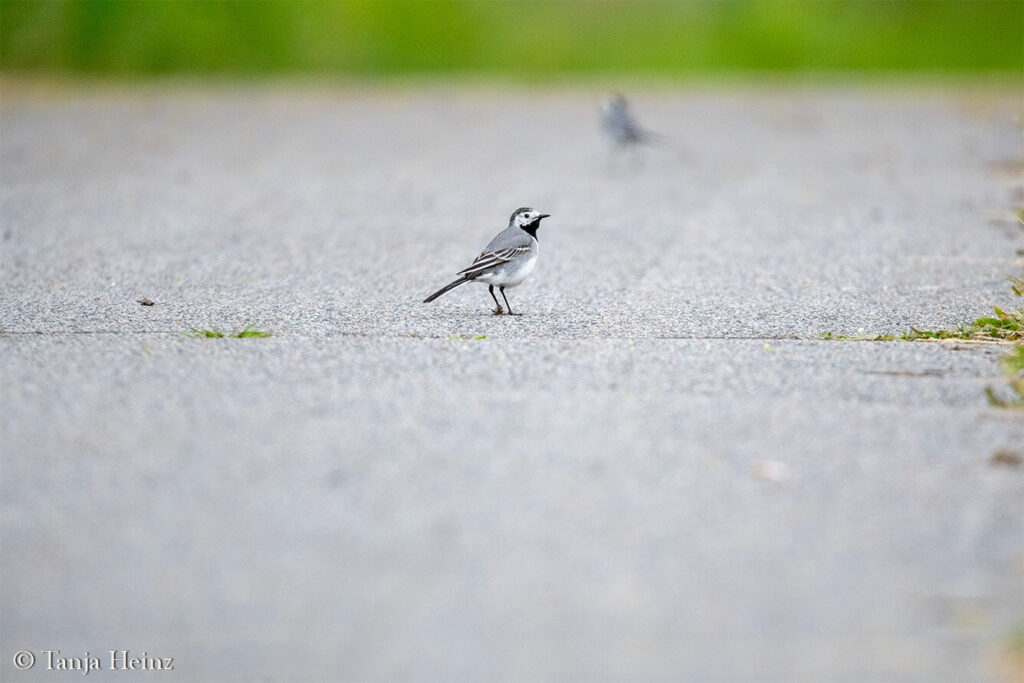
As I approached the island of Poel, I spotted numerous mute swans in the waters on either side of the path – peacefully drifting along in all their beauty.
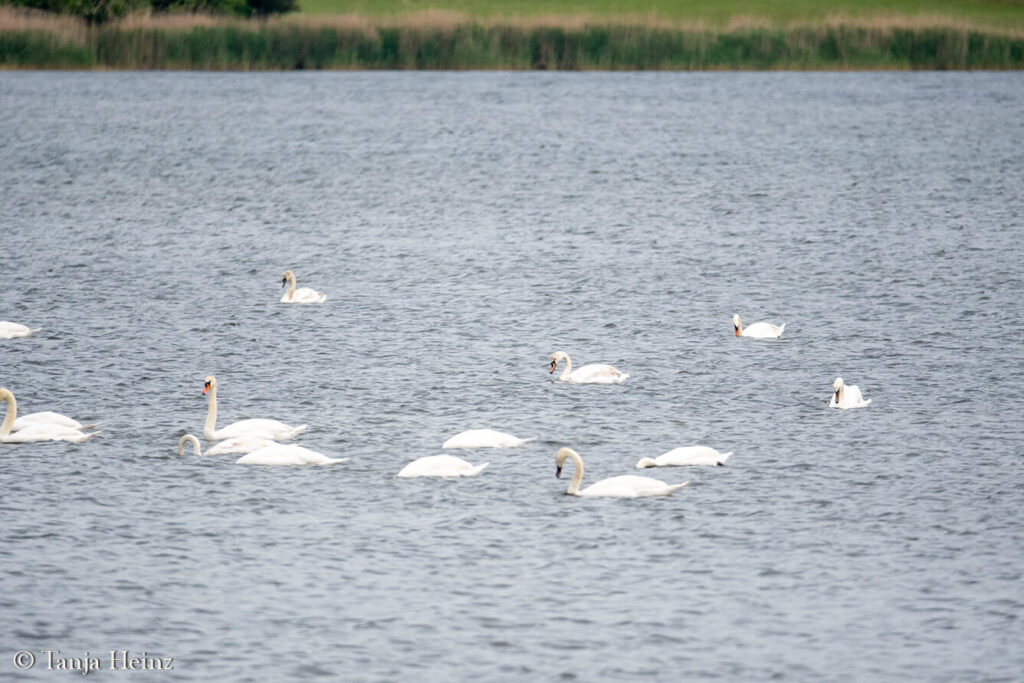
Suddenly, I heard a song I didn’t recognize. Curious, I stopped – would I be able to catch a glimpse of the singer? I stood still, listened, waited.
And sure enough: after a little while, it appeared. Only from a distance, but I was thrilled nonetheless – I hardly ever get to see this bird.
It was a sedge warbler.
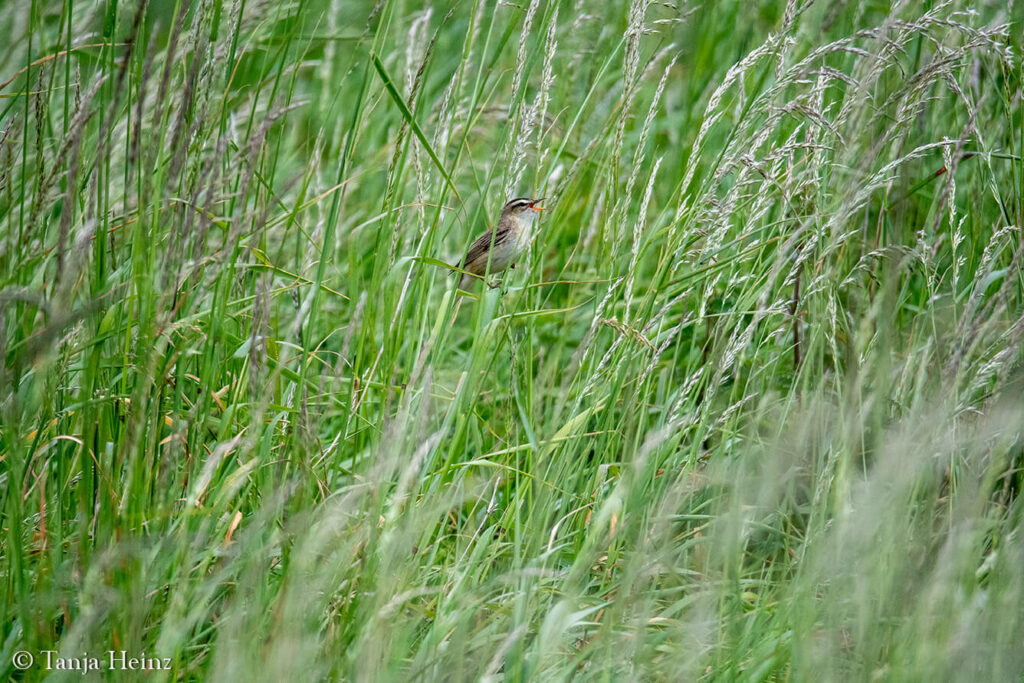
Information: I identified the sedge warbler with the help of the platform iNaturalist. If you ever need help identifying animals or plants yourself, I can highly recommend iNaturalist – it’s a fantastic resource for anyone who loves nature.
That was truly a special encounter, as I’ve only rarely been able to observe sedge warblers—and hardly ever up close. The last time was on Borkum.
Not far from the reed warbler, I heard another song—this time from a familiar bird: the corn bunting.
Curious, I looked around, and indeed—there she was, sitting calmly but somehow striking. Her song has become quite familiar to me, as I’ve seen and heard several corn buntings at Tempelhofer Feld in Berlin.
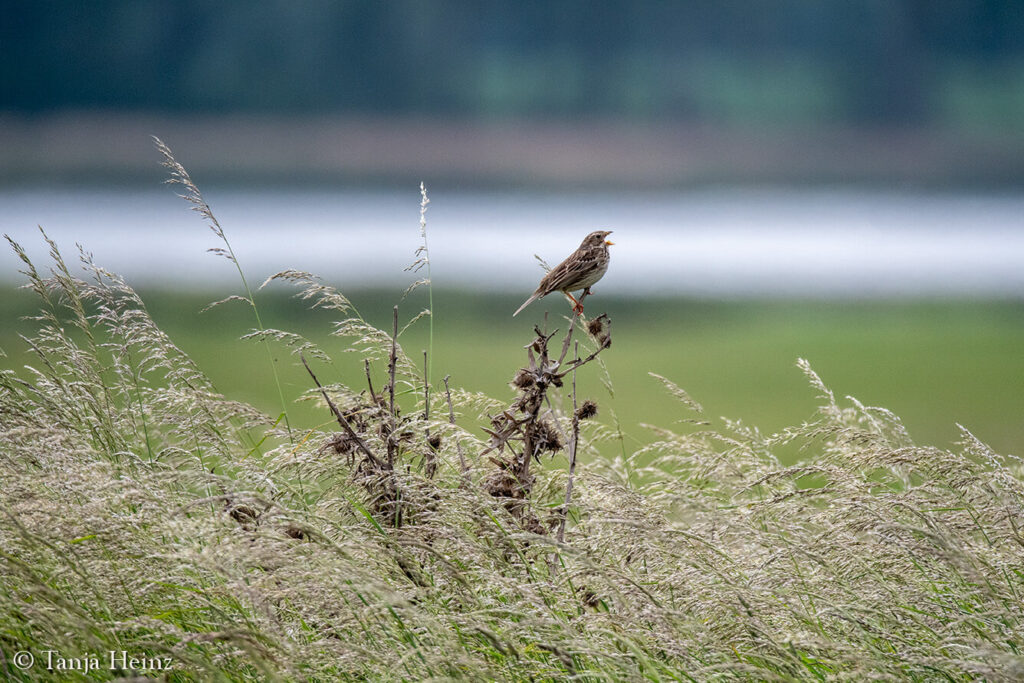
On the way toward Poel, I kept stopping again and again to take in the diverse bird songs and encounters. But at some point, I decided: no more breaks now — after all, I still wanted to reach the sand martins on the island of Poel.
Besides the sand martins, I heard and saw many other birds: common nightingale, common chiffchaff, yellowhammer, great tit, Eurasian skylark, and house sparrow. Once, I even caught the call of a common pheasant — just very briefly, but instantly recognizable, as this distinctive sound reminded me of my trip to Borkum.
I especially wanted to take a photo of a lesser whitethroat to show here. Unfortunately, it was too quick, and I was too slow. But I did manage to record its song — so it remains one of the most beautiful birds vividly in my memory.
Other birds you can encounter on the island of Poel include the Eurasian blackcap and the European robin.
One evening, I sat quietly in a park in Wismar and listened: to my left, a Eurasian blackcap was singing; to my right, a European robin.
It was a very special moment — so peaceful and beautiful.
In my recording, however, only the robin can be heard, but the memory of both voices remains vivid.
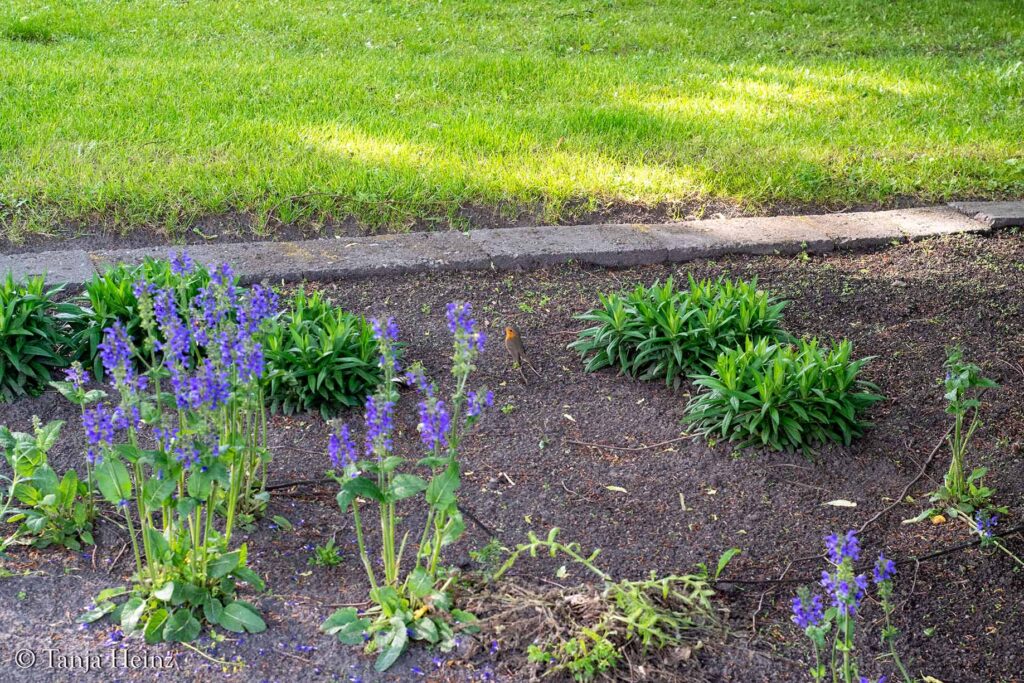
Information: Other birds that have been observed and reported on the island of Poel by iNaturalist users include European herring gulls, Eurasian wigeons, black-headed gulls, great cormorants, greylag geese, mallards, common cranes, common shelducks, common gulls, common ringed plovers, and oystercatchers. And that’s just a small selection — the island of Poel provides habitat for many, many more bird species.
Just as I couldn’t discover the entire birdlife of the island of Poel, the island itself largely remained a mystery to me. With an area of just over 35 square kilometers, Poel isn’t huge, but for someone like me who likes to linger, look closely, and not just quickly “tick everything off,” a day trip is far from enough.
By the way, the island has around 2,500 inhabitants, most of whom live in the largest village – Kirchdorf. On a bike tour to see the sand martins on the island of Poel, the route passes through Kirchdorf – unless you take the path toward Gollwitz. I didn’t venture that way, though.
Instead, I headed in the opposite direction, between Timmendorf and Brandenhusen, where there are supposed to be steep cliffs – exactly where the sand martins have their nesting holes. And indeed, I was able to see the cliffs with my own eyes.

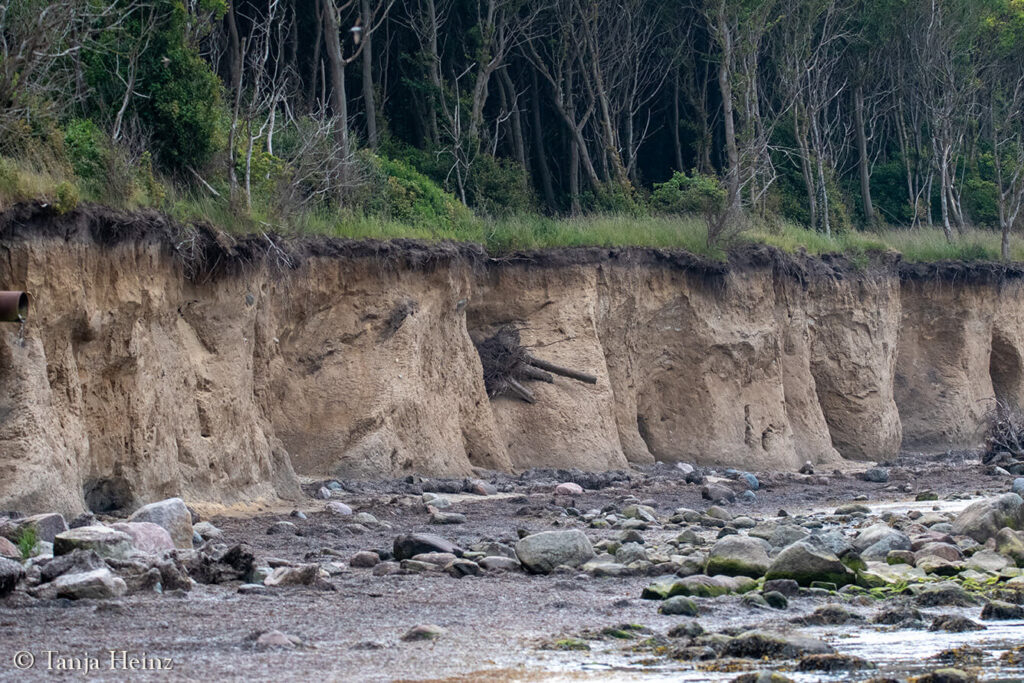
But there was no sign of sand martins at the cliffs. Although a few swallows were flying back and forth at Timmendorf Beach, it was pretty quiet along the cliffs.
The path along the cliffs from Timmendorf Beach also seemed quite difficult and hardly passable.
So, what to do?
I wasn’t alone there, but no one really seemed brave enough to walk along the cliffs. After some thought, I finally decided to continue by bike and try to reach the cliffs from the other side. So I headed toward Brandenhusen — though not all the way into the village — hoping to find access to the cliffs there.
Information: Timmendorf Beach is a wonderful place to relax. Besides a cozy restaurant, a playground, and a café, it also offers ideal conditions for a lovely walk along the coast.
From there, I finally discovered a path along the cliffs. Although the trail was a bit muddy in places, it was still easily passable. On the beach, some visitors and locals had made themselves comfortable, enjoying the peace and the sea.
But I didn’t stay long, as my goal was the sand martins…
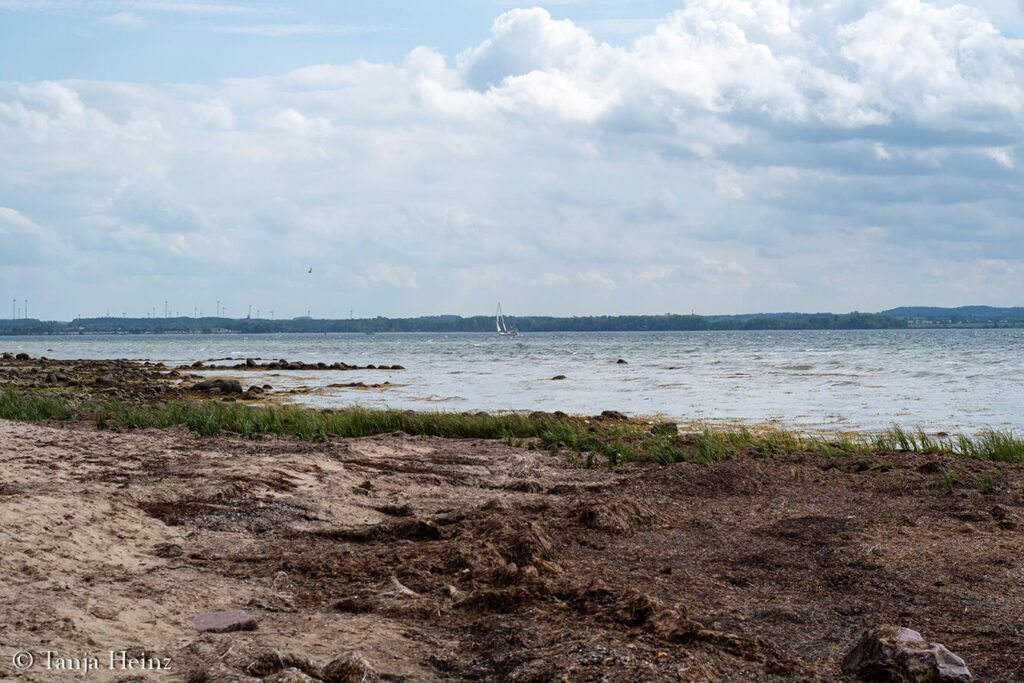
Information: If you’re also interested in mammals: from Wismar, you can easily go on a tour to see the grey seals and harbor seals. You can learn more about this in one of my other blog posts.
Sand martins on the island of Poel
So I set off – in search of the sand martins.
But where exactly was I supposed to find them? And how could I even tell if they lived in a certain place?
I just kept walking – step by step, following my instinct.
Eventually, I reached the first steep banks – and there I saw them: the first nesting holes of the sand martins.
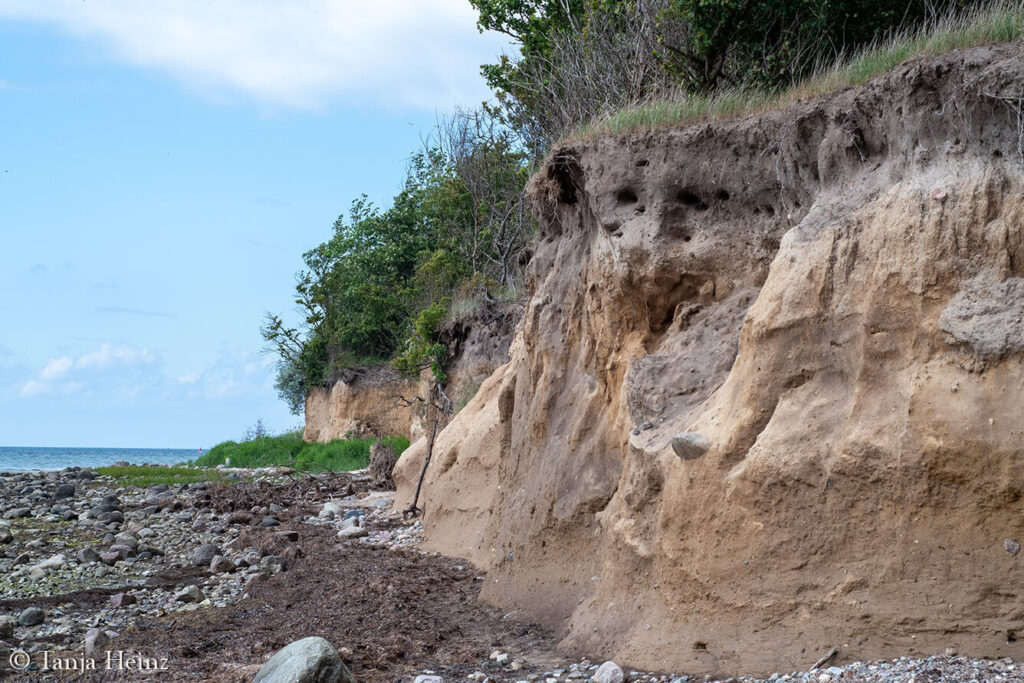
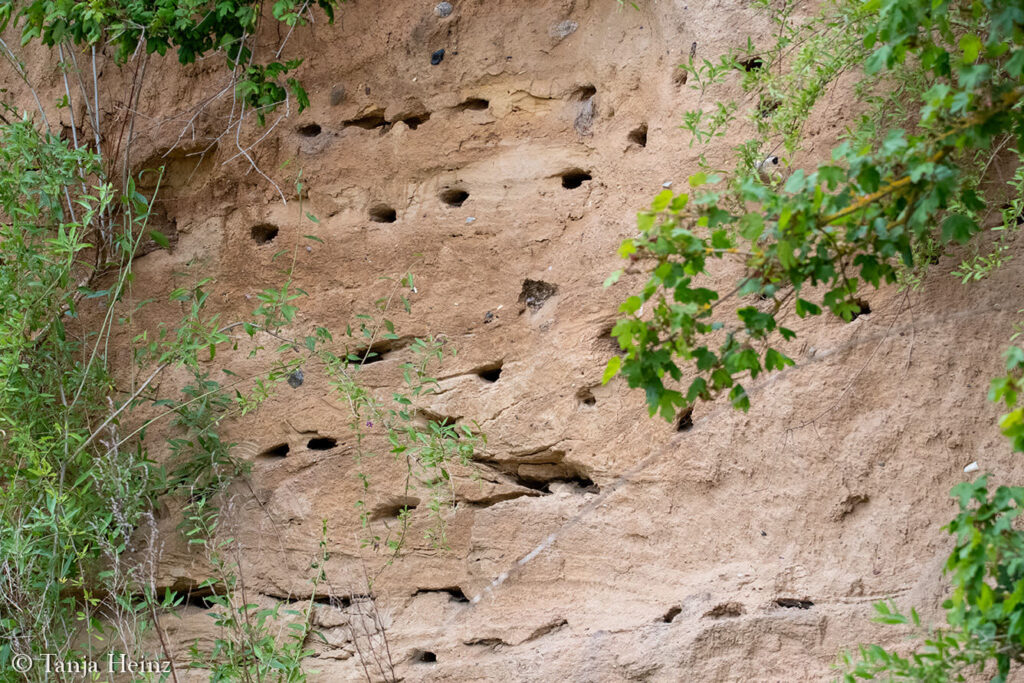
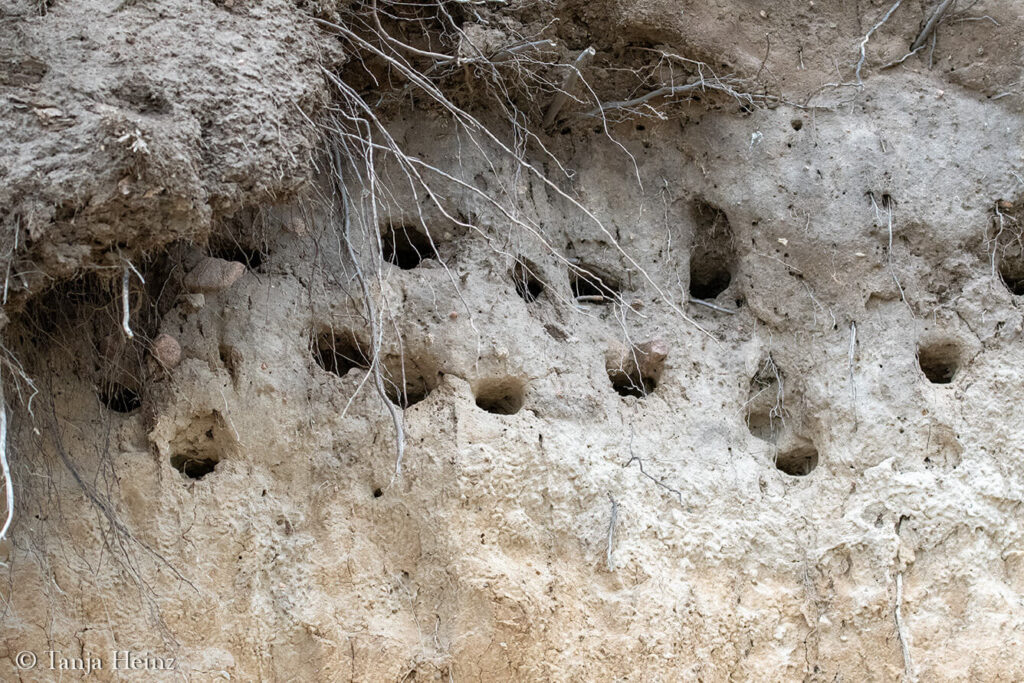
But where were the sand martins?
It was already midday – not exactly the best time to be birdwatching.
Around the nesting holes, it was quiet – almost too quiet.
But I decided to wait. I had plenty of patience, after all!
And sure enough – after a while, the first sand martin appeared, flying straight toward its nesting hole.

Information: Please keep a respectful distance from the nesting holes and try to remain as unobtrusive as possible. The birds must not be disturbed under any circumstances.
Photographing the sand martins was anything but easy.
How was I supposed to know exactly when one would leave its nest? And when one was approaching, everything happened so fast that I could hardly keep up with the camera.
Yes, I admit – it was frustrating at times.
But that was okay.
I was in a phase where I wanted to approach photography more calmly anyway. Not every shot had to be perfect. What mattered far more was the experience – the watching, the being there.
Still, I kept trying. And eventually – there they were. The sand martins appeared, and at last, I was able to catch them a little more clearly through the lens.
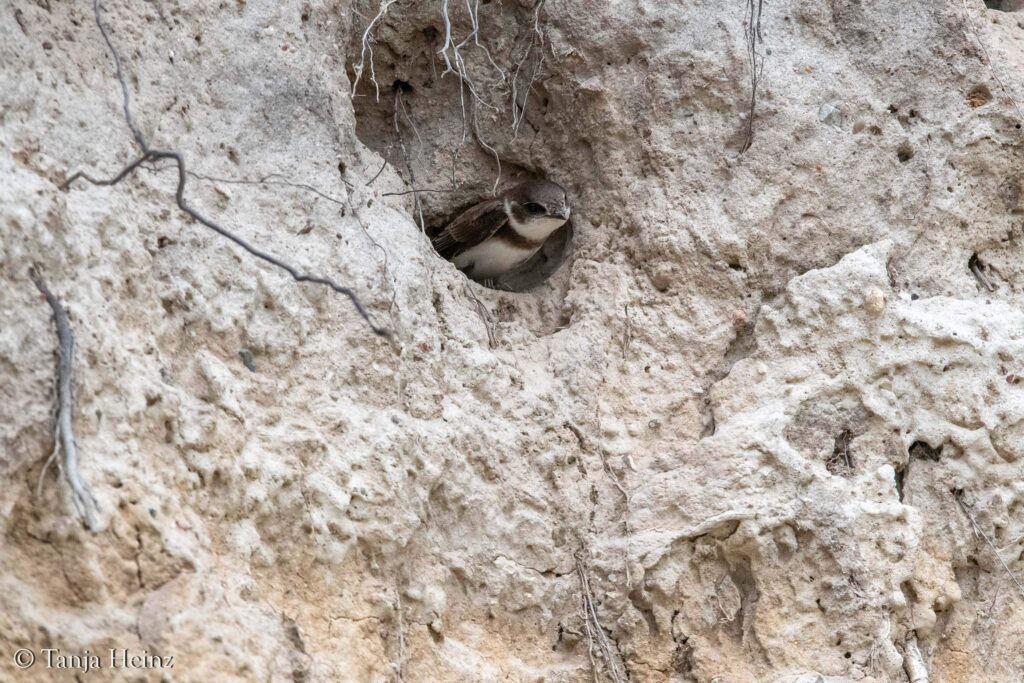
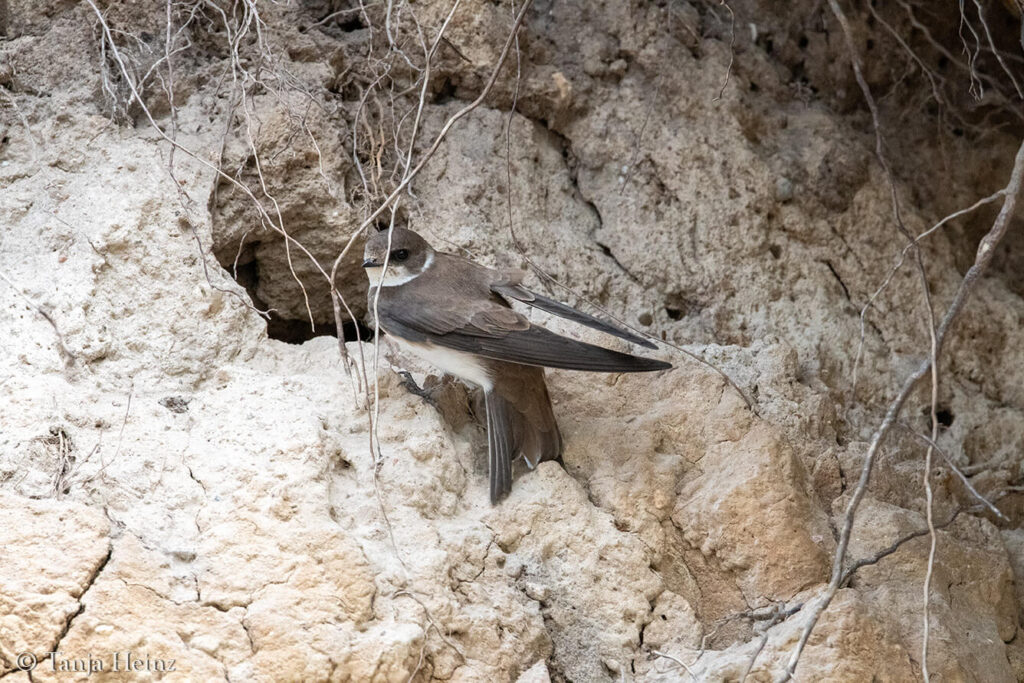
Then, one of the sand martins calmly settled on a branch – and at last, I had the chance to photograph it in peace.
As I savored the moment, another one was already approaching in flight – graceful and almost silent.
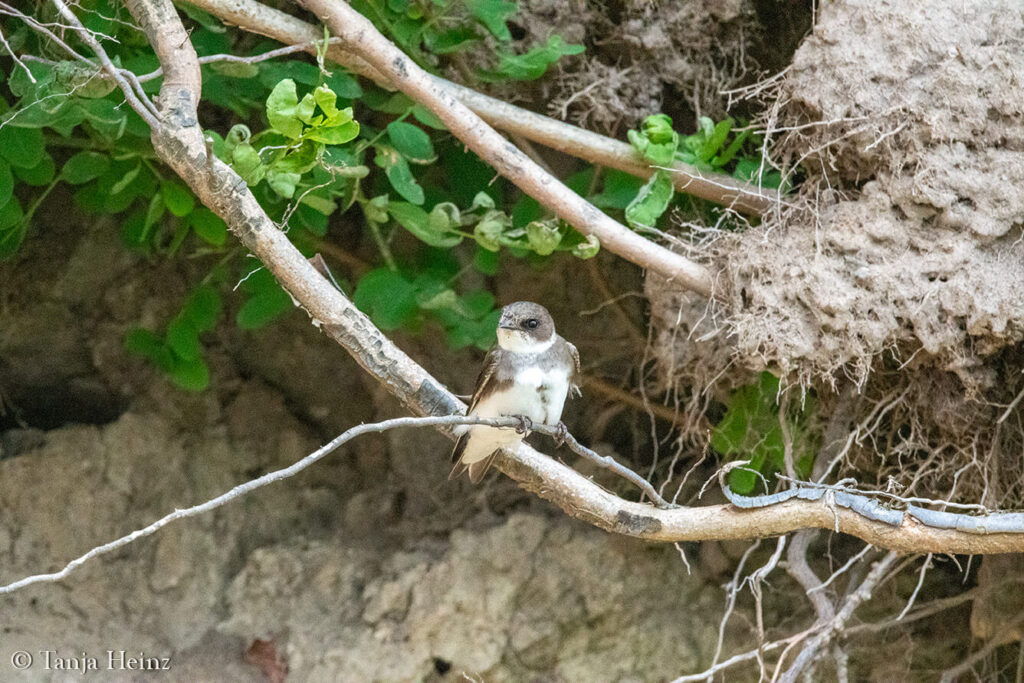

Around midday, things were still fairly quiet – only a few sand martins showed themselves now and then.
But as the afternoon went on, I noticed an interesting pattern: the birds seemed to fly off in small groups, disappear for five to fifteen minutes, and then return together to their nesting holes.
Why did they do that? Did they feel safer in a group? Were they foraging together? And why hadn’t I observed this behavior at another cliff face?
So many questions – and that’s exactly what made watching them so fascinating!
I stayed loyal to the cliff where I had made all those fascinating observations.
I watched in awe as the sand martins approached their nesting holes – sometimes from one side, sometimes from the other.
I only changed sides when the birds weren’t around.
I didn’t want to disturb them under any circumstances.
I just wanted to observe. And marvel.
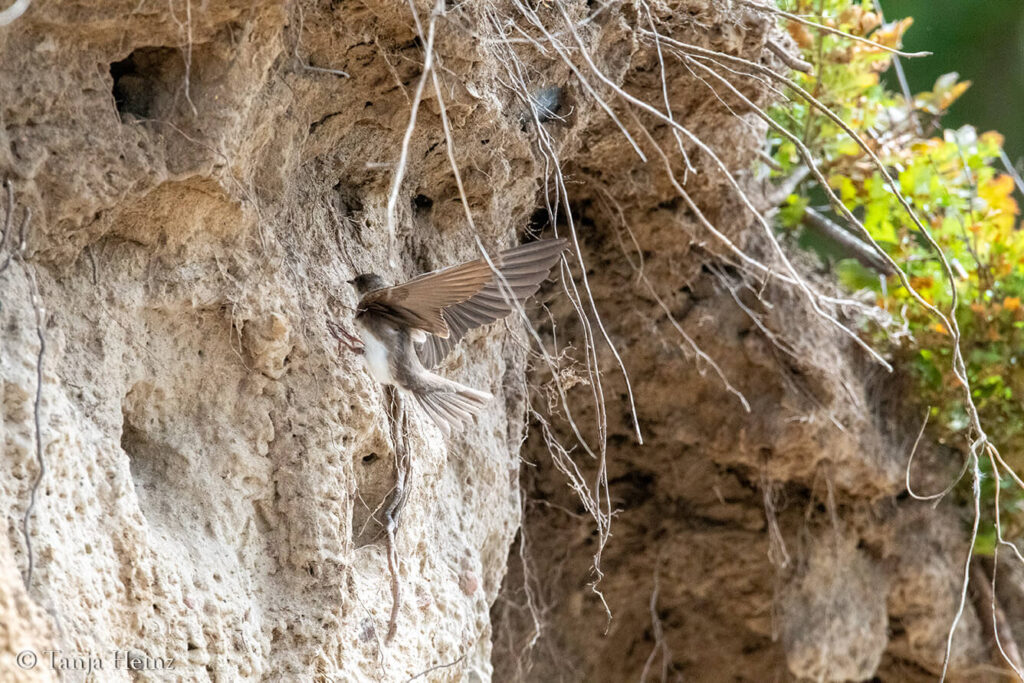

When the sand martins disappeared again, I decided to walk over to the neighboring cliff. I wanted to see if there was more activity there by now.
But suddenly, I heard calls – unfamiliar, unusual. A sound I hardly ever hear.
What kind of bird was that?
I looked to the left, to the right, and up – and then finally, I spotted it:
A common redstart.
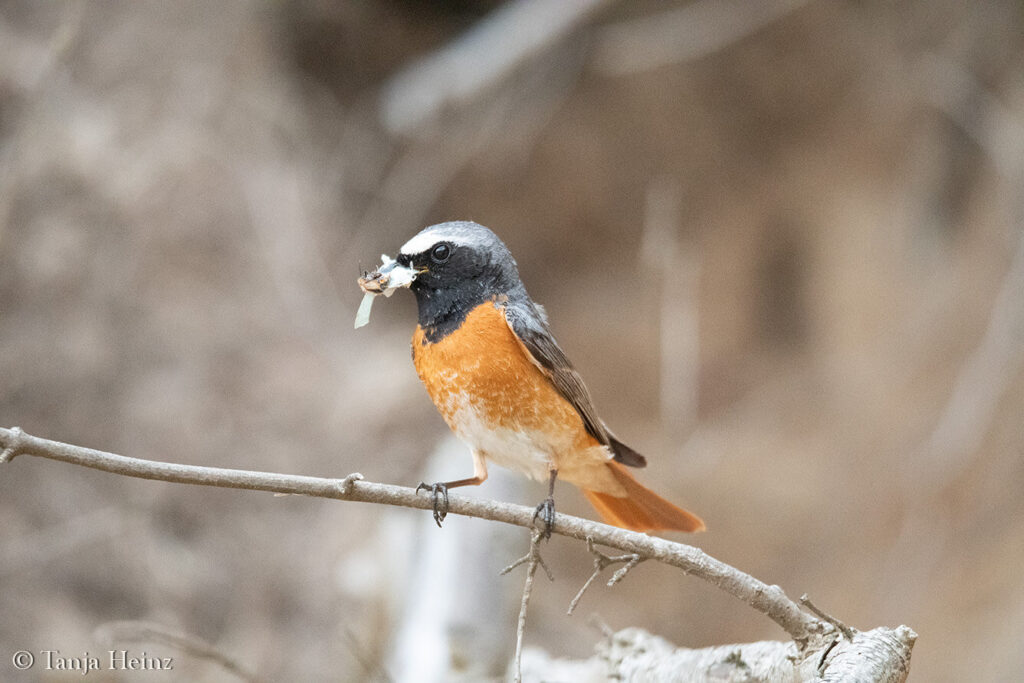
How beautiful!
I was absolutely thrilled by the sight. But something wasn’t quite right: the male seemed restless. It had insects in its beak – clearly on its way to feed its young.
Shortly afterward, a female appeared – also with food in her beak.
Were the two of them a pair? Everything pointed to that.
She, too, seemed tense.
Something was clearly bothering them. Maybe it was me – without meaning to.

I decided to leave.
And indeed – as soon as I had moved a little farther away, the calls stopped.
It was clear: the redstarts had their nest nearby, and I had probably gotten too close.
An uneasy feeling remained. I hadn’t meant to disturb them – and now I felt bad.
Information: Have you ever seen a common redstart? I myself rarely encounter one. One of the few times was in Berlin’s Tiergarten – a real lucky find. In contrast, I see the black redstart more often. It likes to nest under eaves or on buildings – which brings it close to people, but unfortunately isn’t always an advantage.
At another cliff, I spotted a European goldfinch. It seemed much more relaxed than the redstarts – my presence barely seemed to bother it.
It, too, was apparently searching for food.
Perhaps it had a nest nearby as well? Who knows.
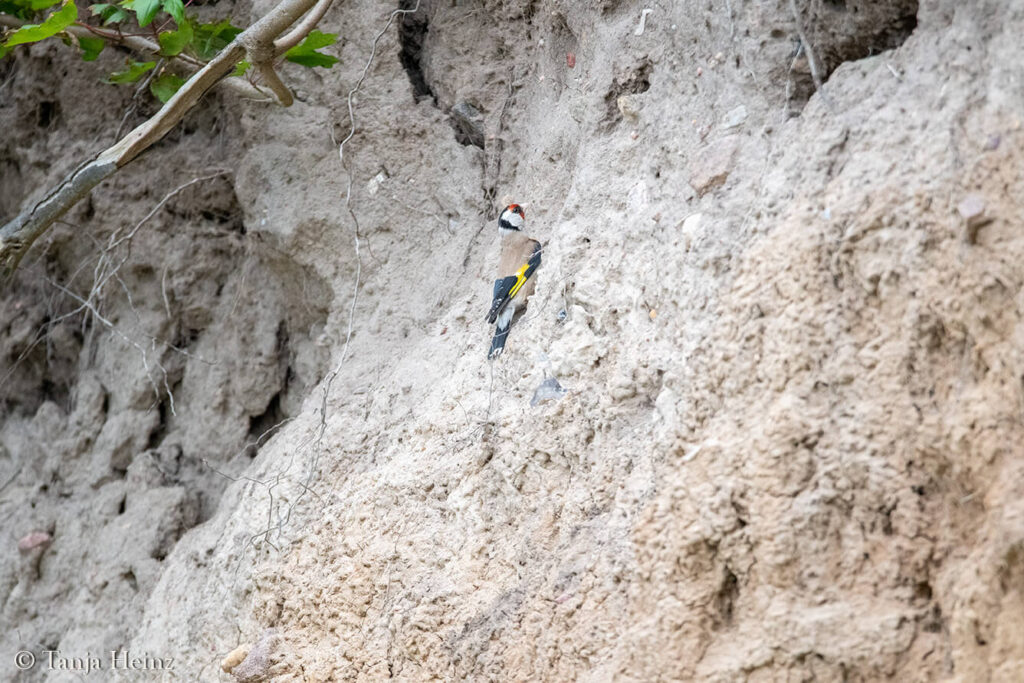
Other birds I noticed near the sand martins were mallards (photo above) and a European herring gull (photo bottom left) – the latter being a fairly familiar sight here.
A lone white wagtail (photo bottom right) also appeared. It sat calmly on a stone and seemed to be watching the scene just as attentively as I was.


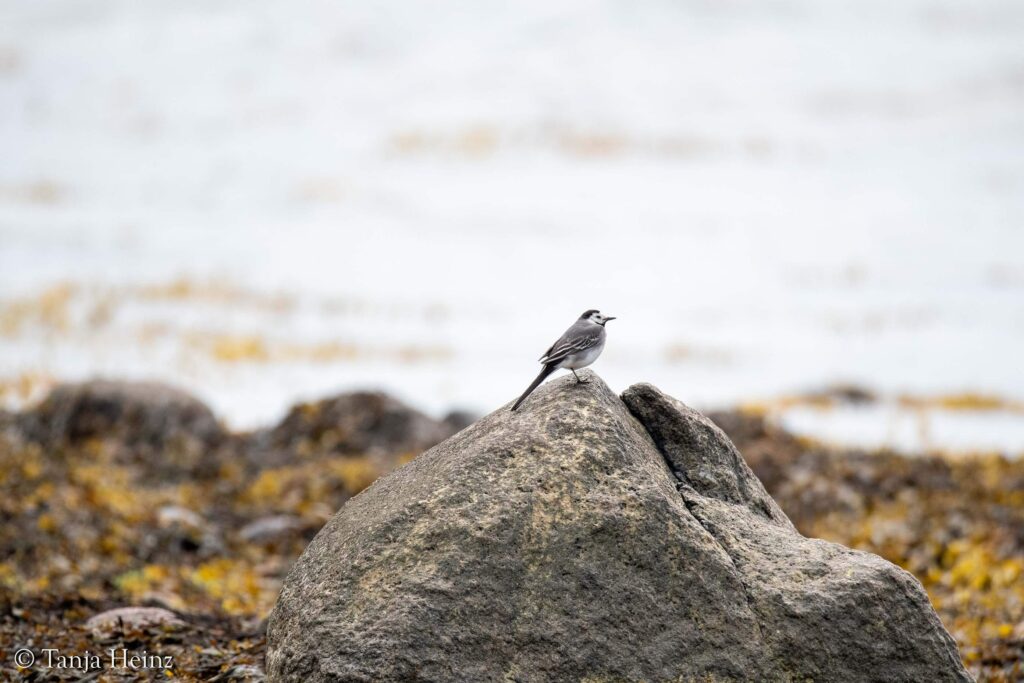
Since it had remained quite quiet at the other cliff, I decided to go back – to the spot where the sand martins flew out in groups. Over time, they became increasingly active there.
What a wonderful sight!
I absolutely wanted to capture these special moments with my camera.
I hadn’t felt so much joy and energy while photographing in a long time.
It was simply beautiful to watch the sand martins as they flew in – a fascinating spectacle of nature.
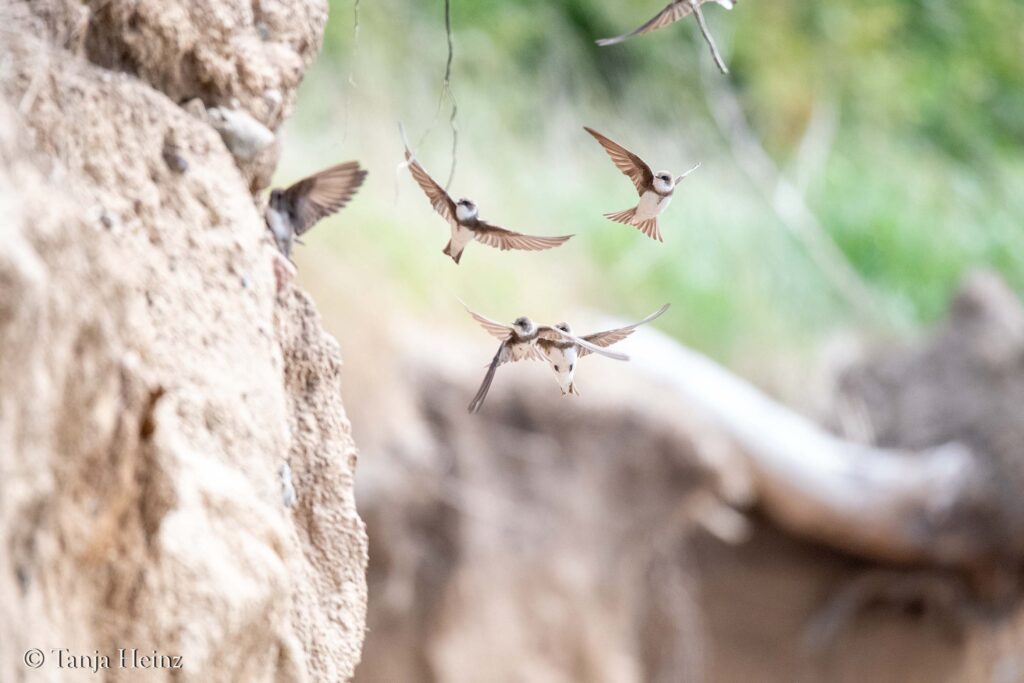
Just as I was looking around, a sand martin suddenly settled on a branch right in front of me – and I was completely enchanted.
Very calmly, it began to preen its delicate feathers – a touching, quiet moment full of grace.
What a special experience!
What a blessing to be able to witness such a scene!
Simply wonderful.
But it didn’t end with just that one martin: a second one joined.
At first, it just sat quietly, as if savoring the moment, until it too began carefully grooming its feathers.
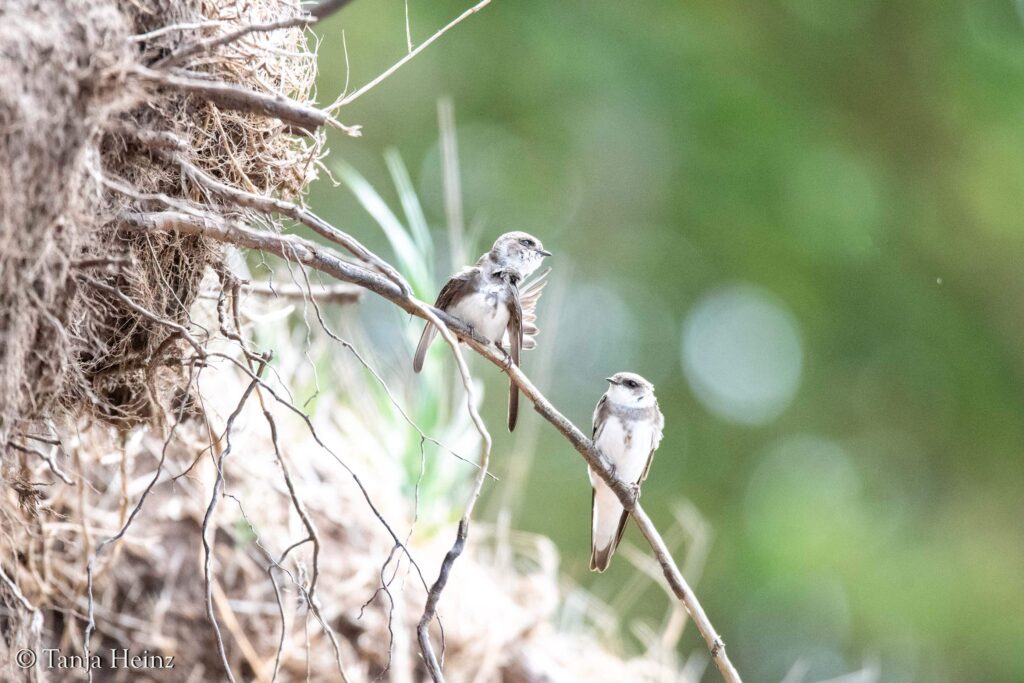
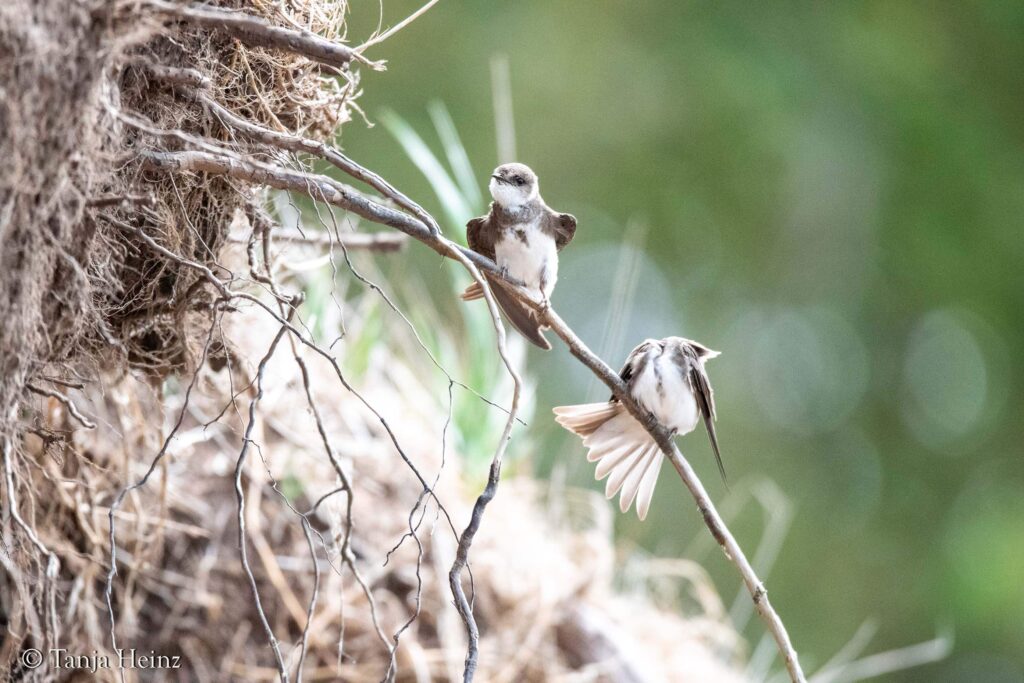
Carefully, I moved a little closer – I wanted to take a better look. It quickly became clear to me: these sand martins were noticeably smaller than the swallows I was used to.
With a body length of just 12 to 13 centimeters, the sand martin is actually the smallest swallow species in Europe.
Its appearance is as delicate as it is distinctive: the upper parts are earthy brown, while the underside shines bright white – marked by a narrow, gray-brown band across the chest. The undersides of the wings appear darker, almost shadowy. And its tail? Only slightly forked – a subtle but typical detail.
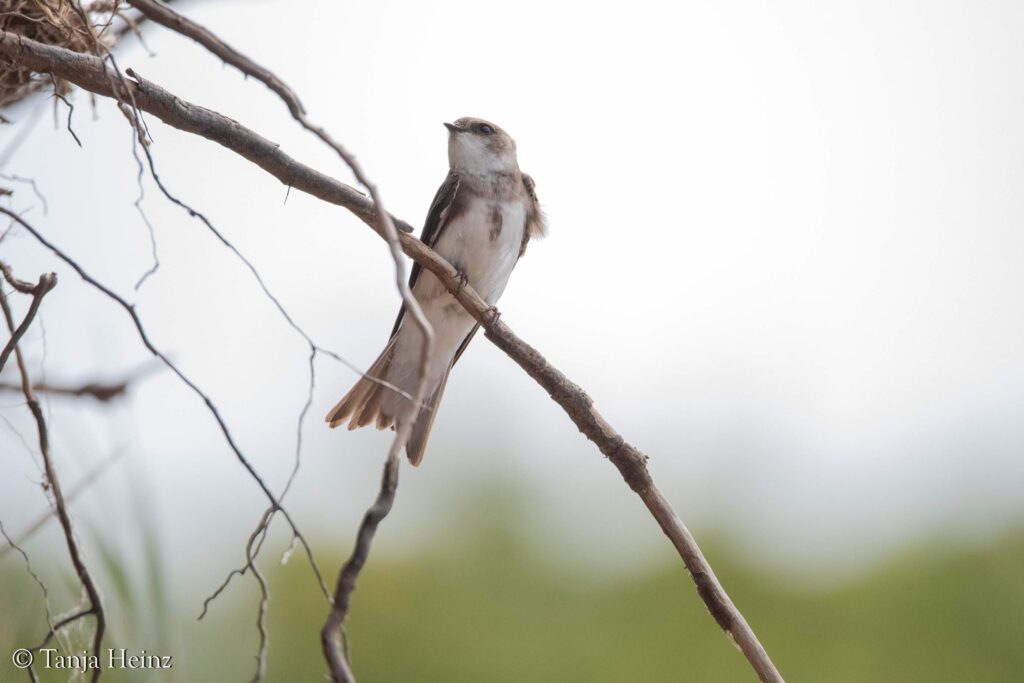
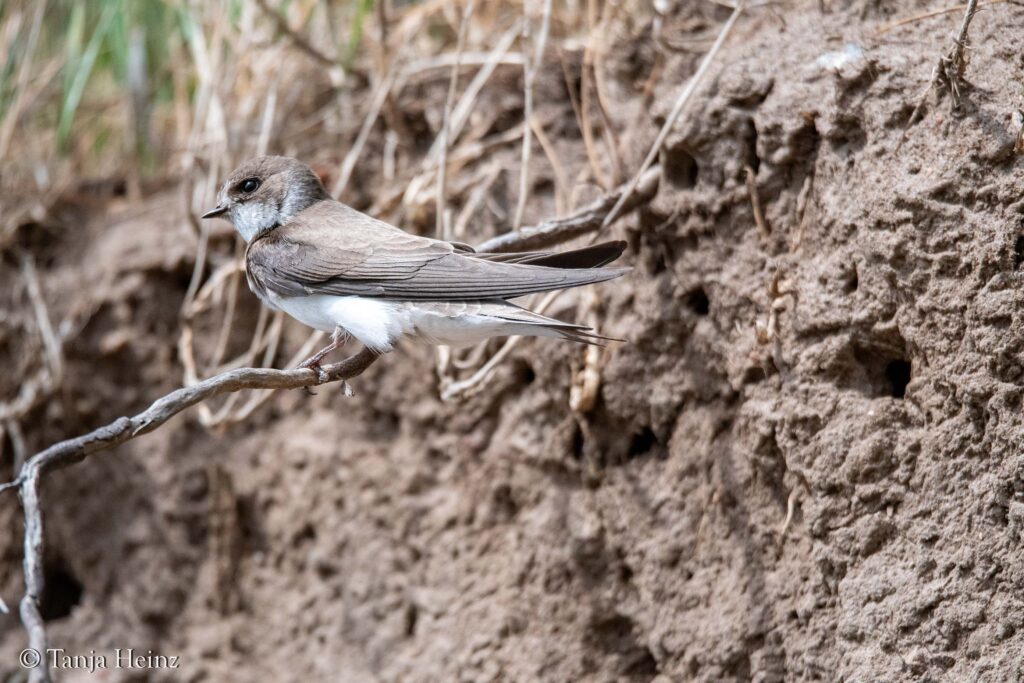

Information: Worldwide, as of July 2025, nearly 90 different species of swallows are known. However, in Central Europe, only four of them are regularly encountered in the wild: besides the sand martin, the barn swallow, the common house martin, and the rather rare crag martin are native species here.
Carefully, I took a small step forward – I wanted to observe the delicate sand martins up close.
What more might they reveal to me about their lives and behaviors?
And indeed: it didn’t take long before the first two martins began interacting with each other.
Could this be a courtship? Or was mating even about to take place?
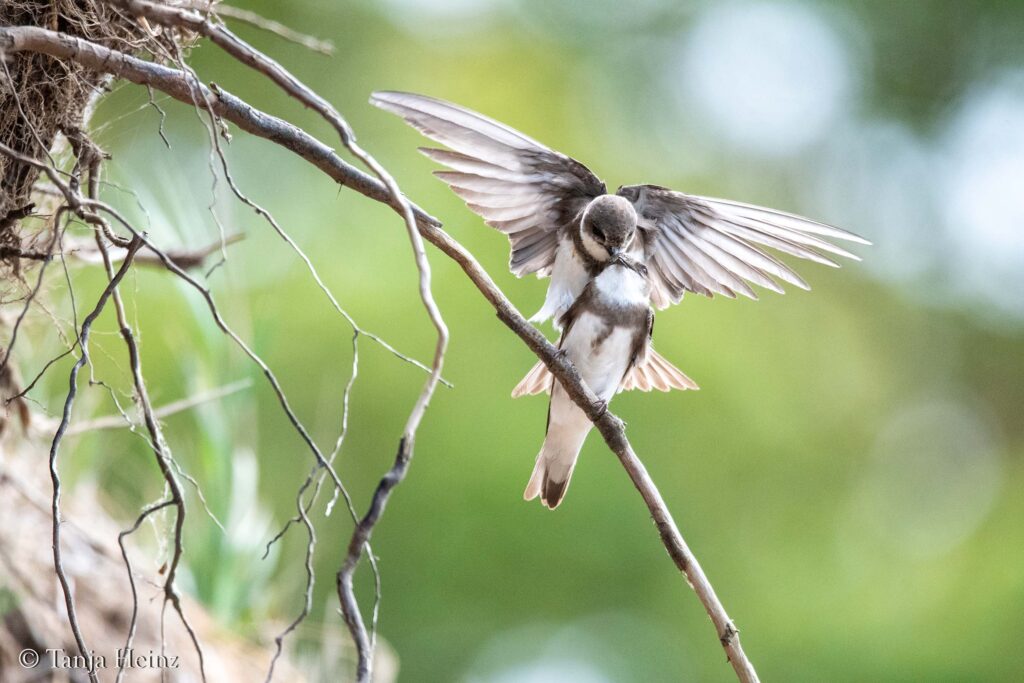
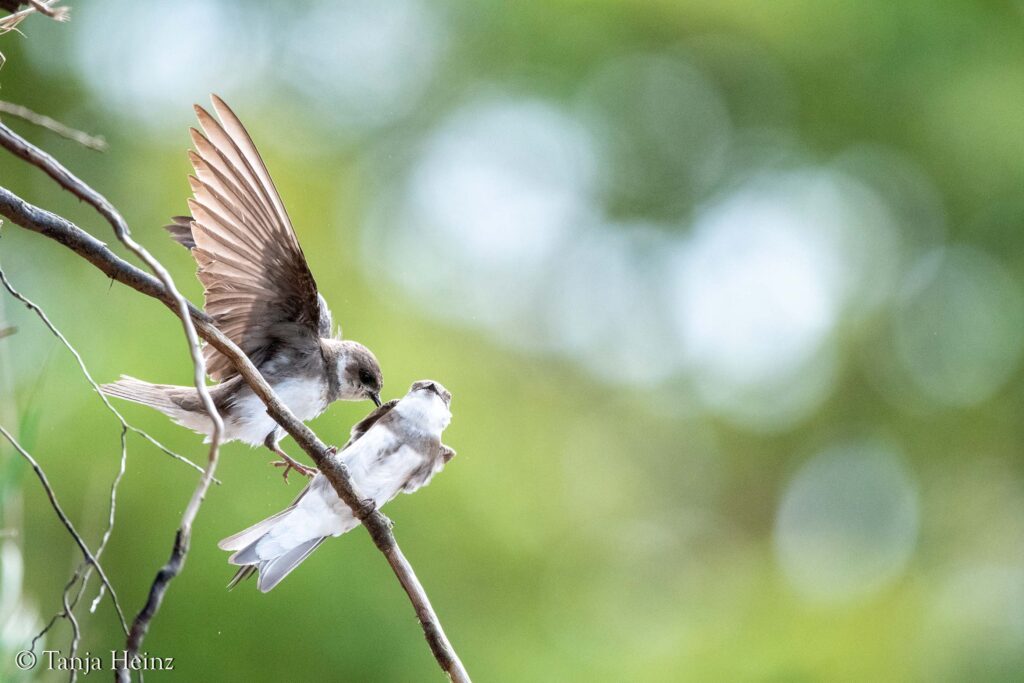
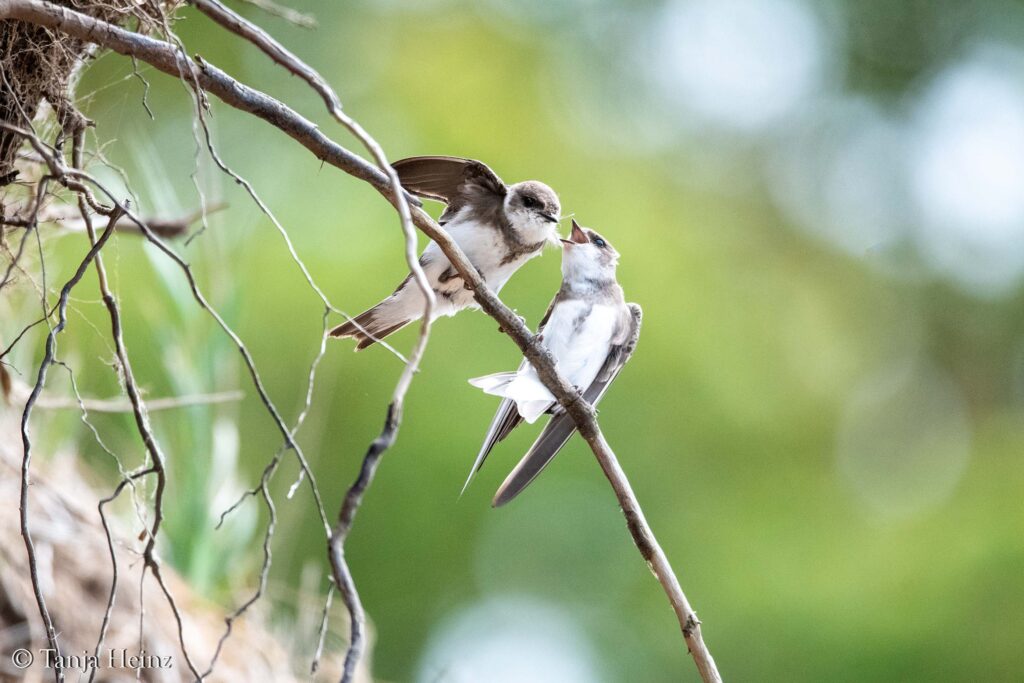
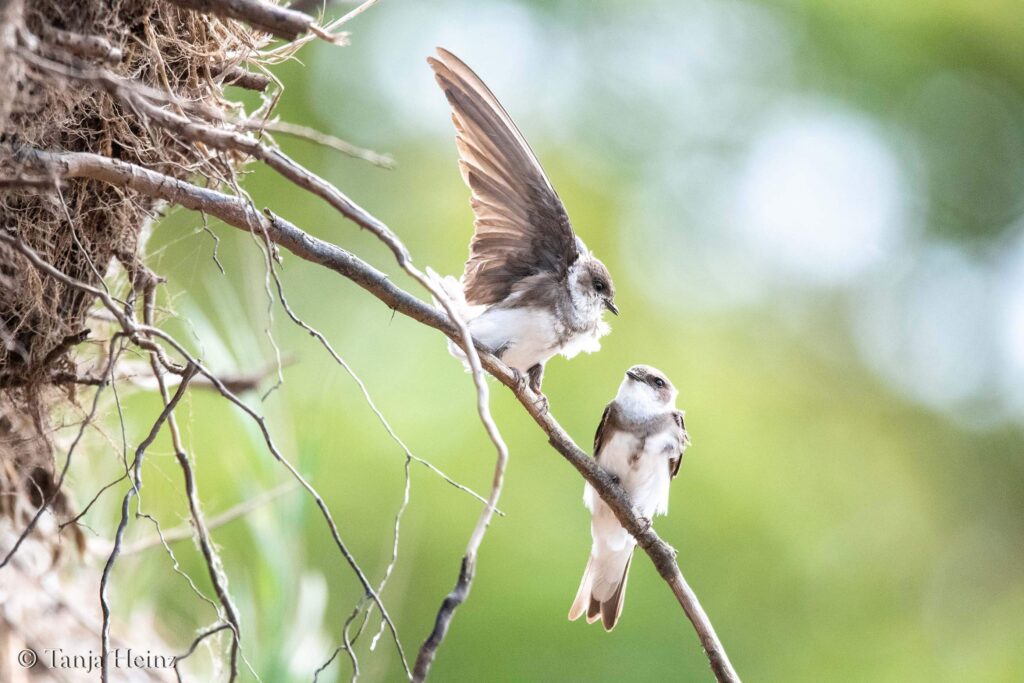
The lower bird seemed unimpressed – its behavior almost resembled a quiet scolding.
In response, the upper bird gave up, quietly settled beside it on the branch, and remained silent.
Speaking of reproduction: sand martins are typical colonial breeders.
When they return from their wintering grounds in April, they look for existing nesting holes in steep banks – or dig new ones. These burrows can reach up to 70 centimeters deep into the soil. At the end, there is a small nesting chamber, softly lined with grasses, stalks, and occasionally a few feathers.
The female lays about four to seven eggs there, which are then incubated by both parents for around two weeks. Both parents also share the task of raising the young – until the little sand martins leave their protective nest about 20 days later and set out into the wide world.
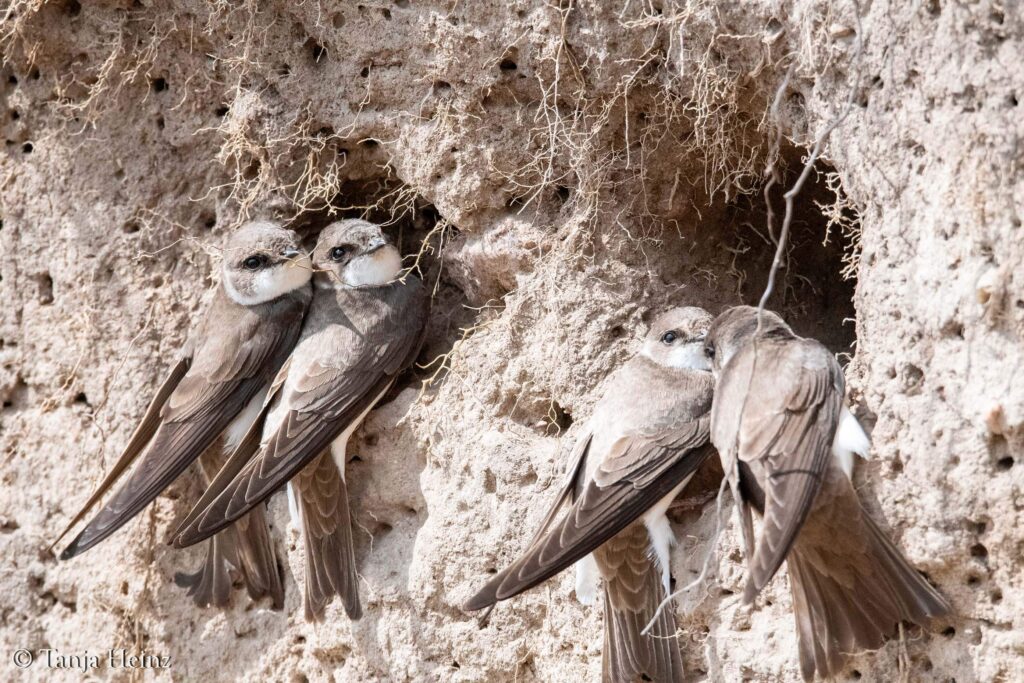
I spent several hours at the cliff, observing and waiting.
By late afternoon, the activity noticeably increased – the sand martins became more and more active. More and more of them appeared near their nesting holes, flying in and out, calling to each other, or gliding through the air in graceful arcs.
I hardly knew where to look first. It was simply beautiful – a small wonder of nature that completely captivated me.
What fascinated me most was how many of them suddenly sat in front of their nesting holes – close together, as if they had agreed to take a brief pause before taking to the skies again.
A quiet moment of stillness amid the bustling life.
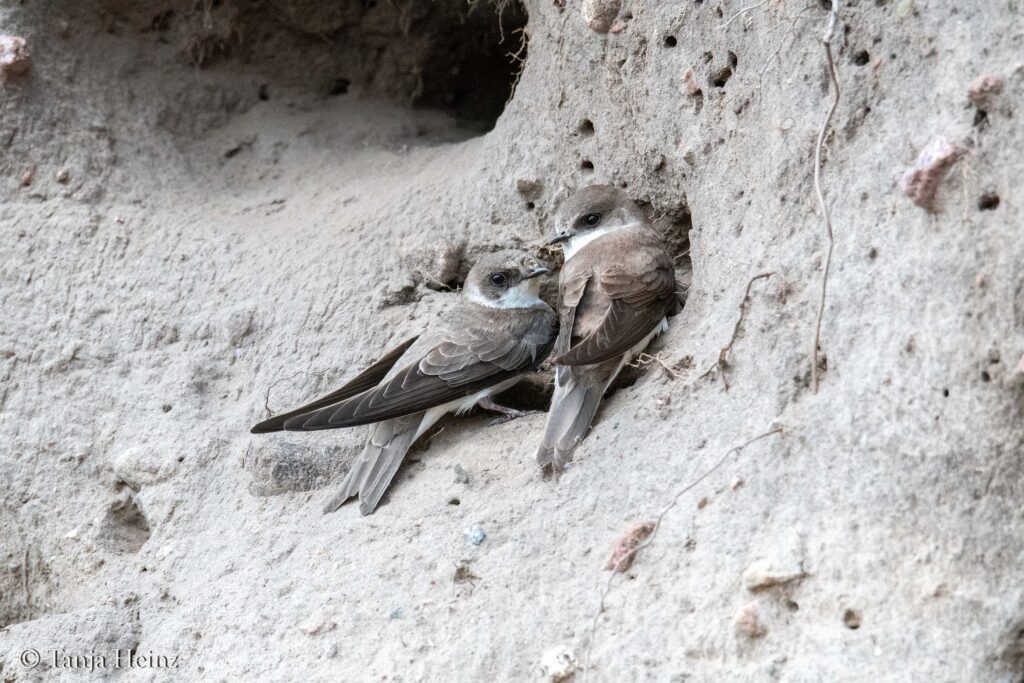


Information: Depending on the timing of the first brood and the weather conditions, it can happen that a female begins a second brood even before the young from the first nesting hole have fledged – in a different hole, and sometimes with a new male.
As mentioned earlier, sand martins are migratory birds.
As long-distance travelers, they leave their breeding grounds as early as August. Their wintering areas extend from West Africa to East Africa – with particularly large gatherings around the East African lakes. Some even migrate further south to South Africa.
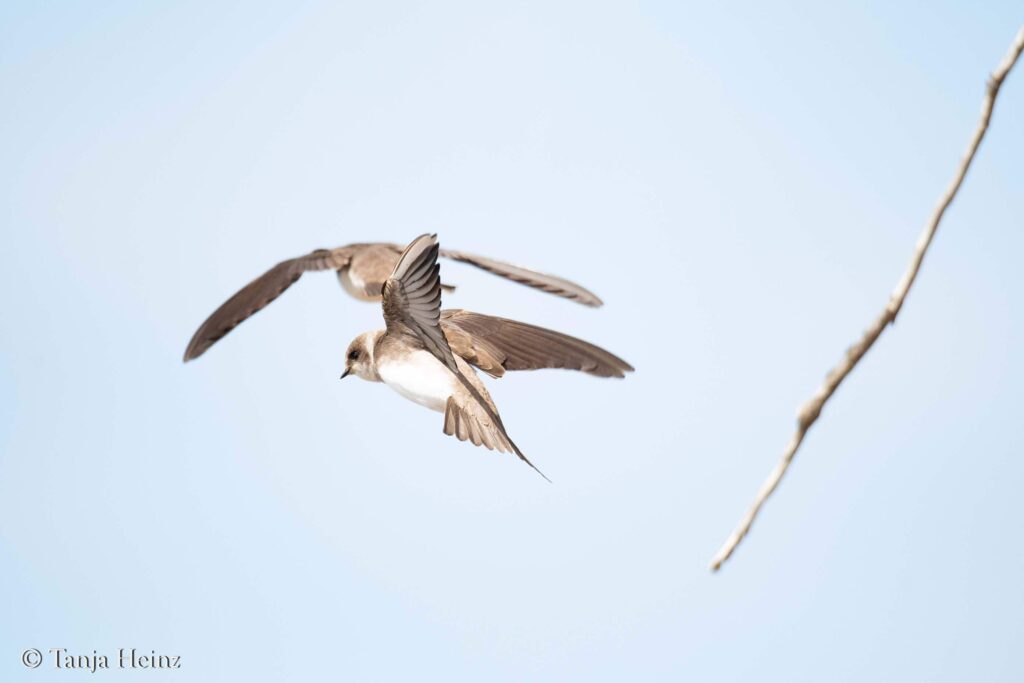

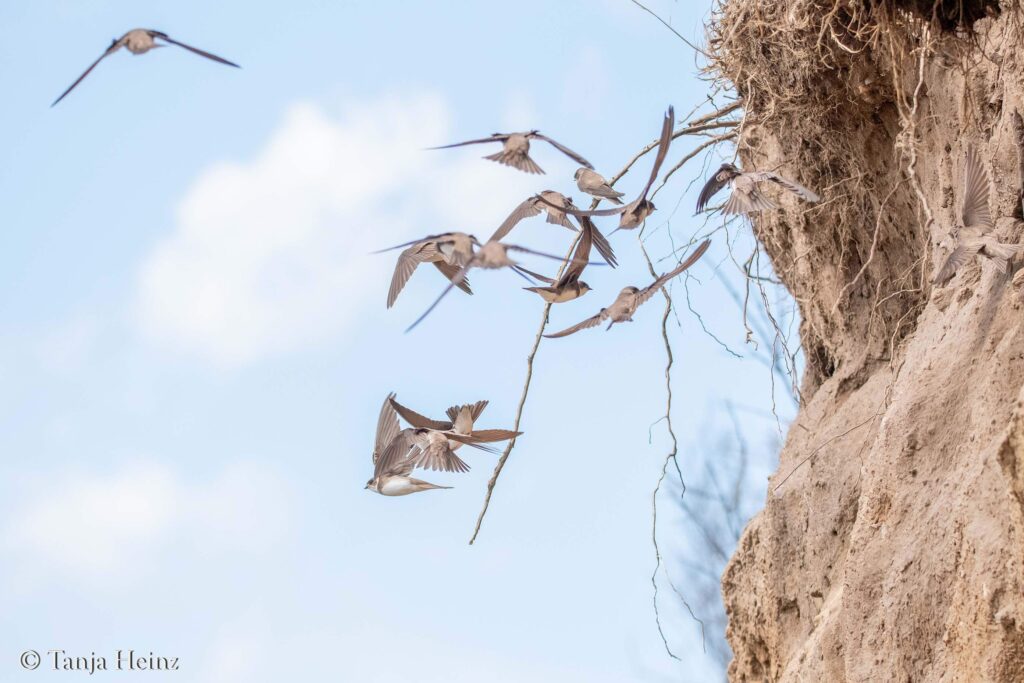
Information: Long-distance migrants are characterized by the great distance between their breeding and wintering grounds – they often cover thousands of kilometers. Other long-distance migrants include Arctic terns, storks, and swifts.
For me, it was a great fortune – indeed, a true privilege – to be able to observe these sand martins in their breeding grounds on the island of Poel.
As mentioned earlier, these birds rely on steep banks – like those found here on Poel. But they are not only found along the coast: sand martins can also be observed today in sand and gravel pits.
In the past, they were almost exclusively native to natural steep riverbanks and coastal cliffs. But with the disappearance of these original habitats – due to construction, erosion, or changes in land use – they have been forced to find new breeding sites. And so they adapt as best they can – in an ever-changing world.
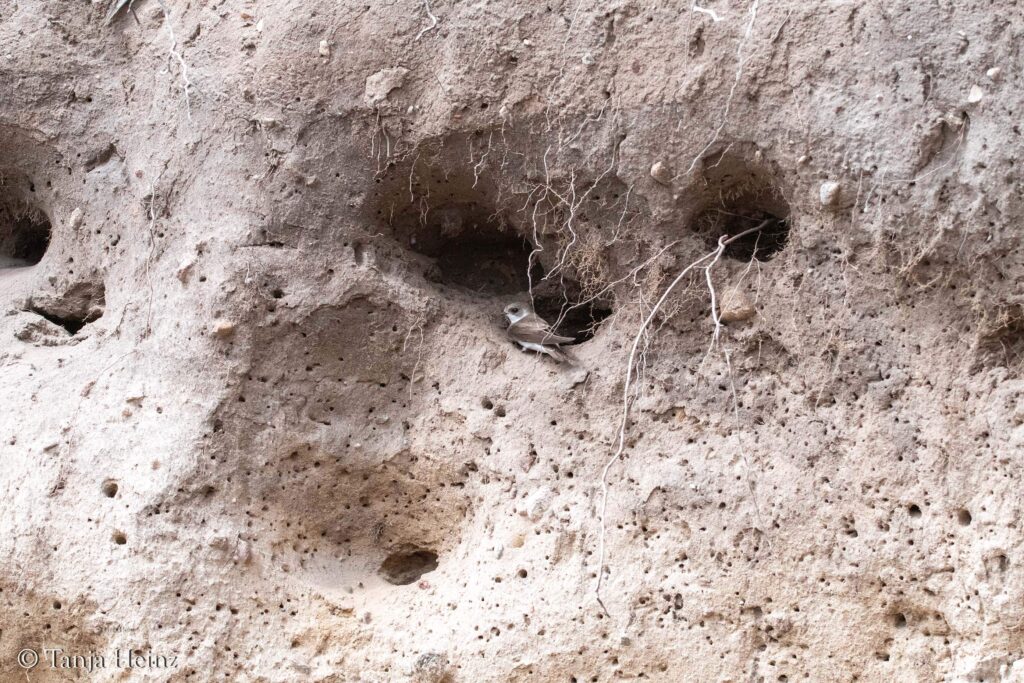

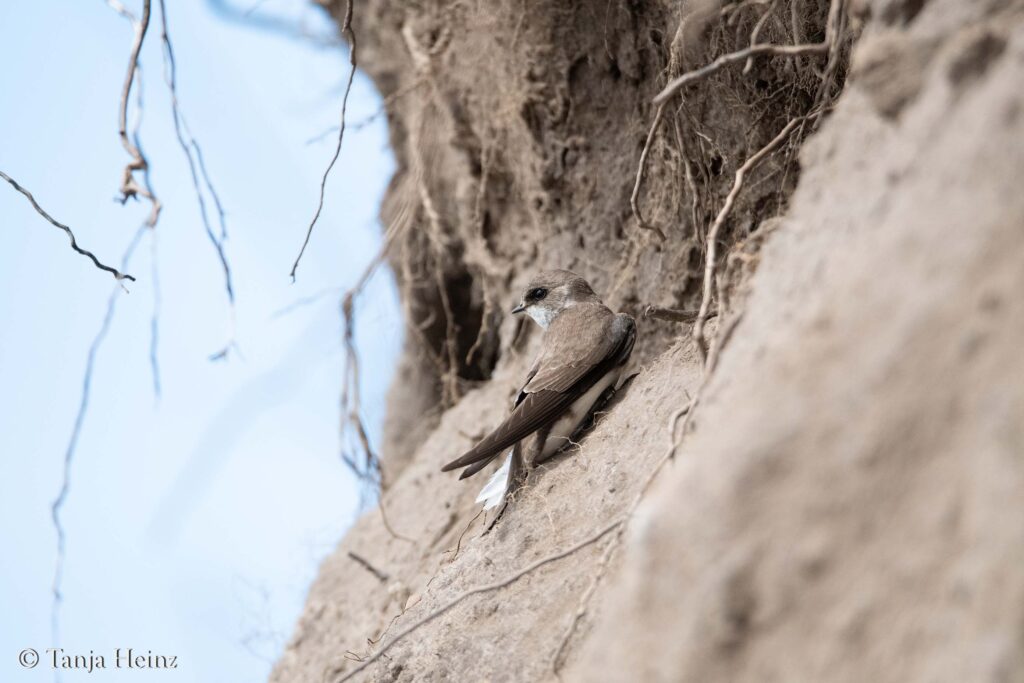

Information: There are said to be other good spots on the island of Poel for observing sand martins. So far, I only know the location described here. However, a passerby mentioned that there are supposed to be additional colonies on the opposite side of the island.
In their habitats, sand martins primarily feed on insects. Depending on where they have established their nesting holes, they hunt their prey over meadows and fields or – as here on the island of Poel – preferably over bodies of water.
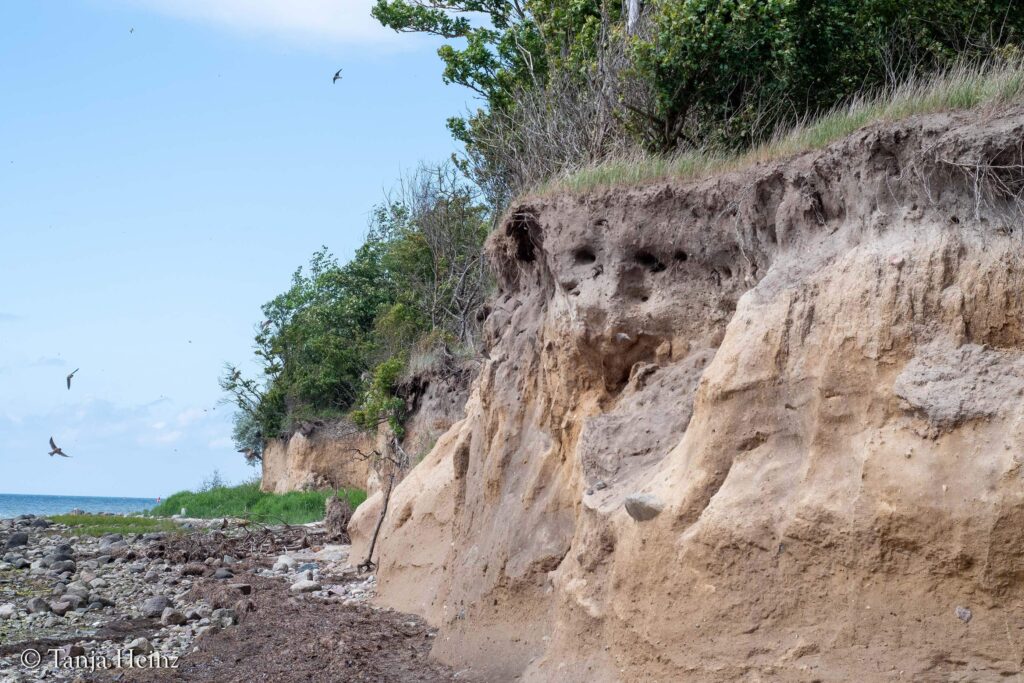
Since sand martins rely on flying insects as a food source, the decline in insect populations naturally might have a negative impact on them as well. According to NABU (as of 2019), between 85,000 and 135,000 pairs breed in Germany. Across Europe, the number is estimated to be around 3.6 to 8 million breeding pairs.
However, sand martins are not only native to Europe: they are also found in large parts of North America and Asia. The North American populations overwinter in South America – making the sand martin one of the almost globally distributed swallow species.
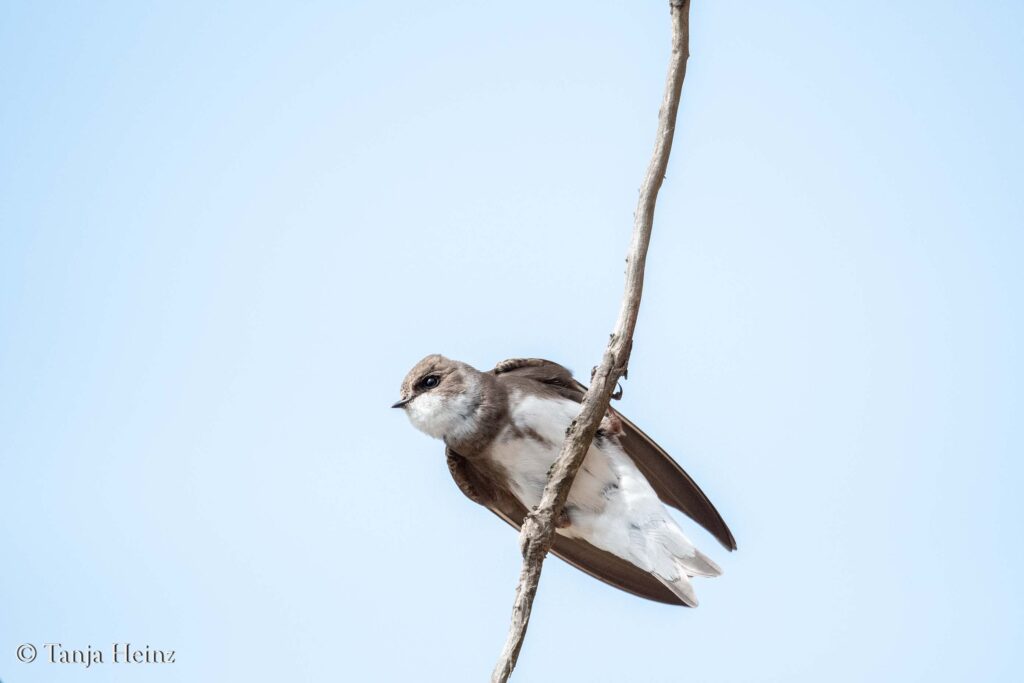
On the IUCN Red List, it is currently classified as “Least Concern.” Nevertheless, the global population shows a declining trend, which calls for attention.
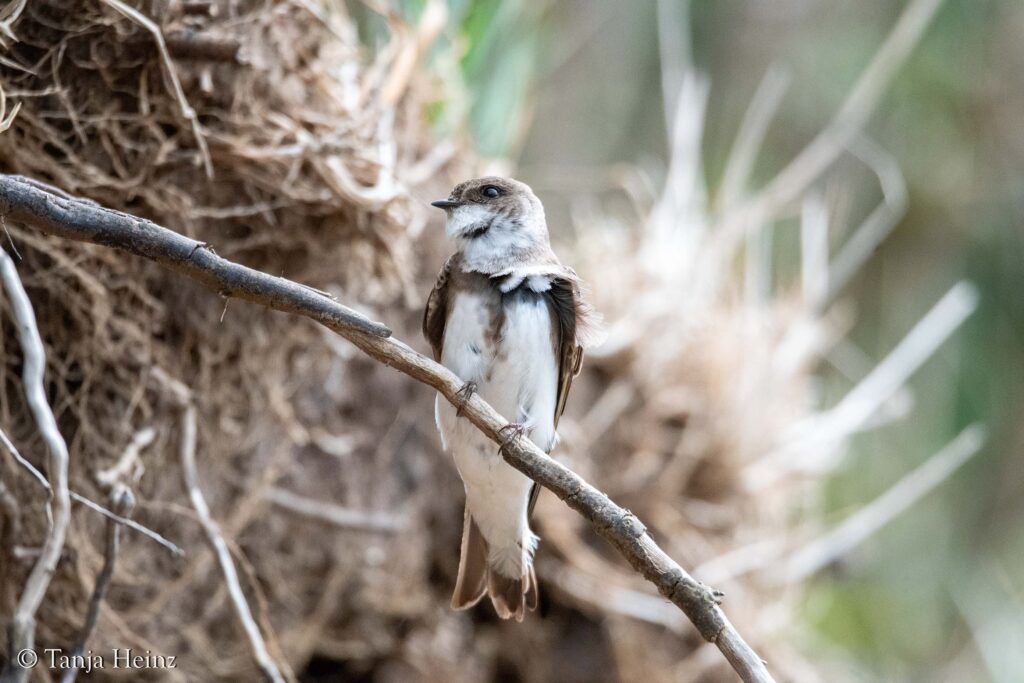
It is difficult to say exactly how the decline in insects affects sand martins – at least, I haven’t found any study so far that investigates this connection in detail.
What is clear, however, is that according to NABU, the loss of suitable habitats is increasingly becoming a problem for the species. Even so-called secondary habitats like gravel and sand pits do not offer sand martins a permanently secure breeding site.
Complicating matters further is the fact that they rely on open, vegetation-free areas near cliffs – only in this way can they freely access and leave their nesting burrows.
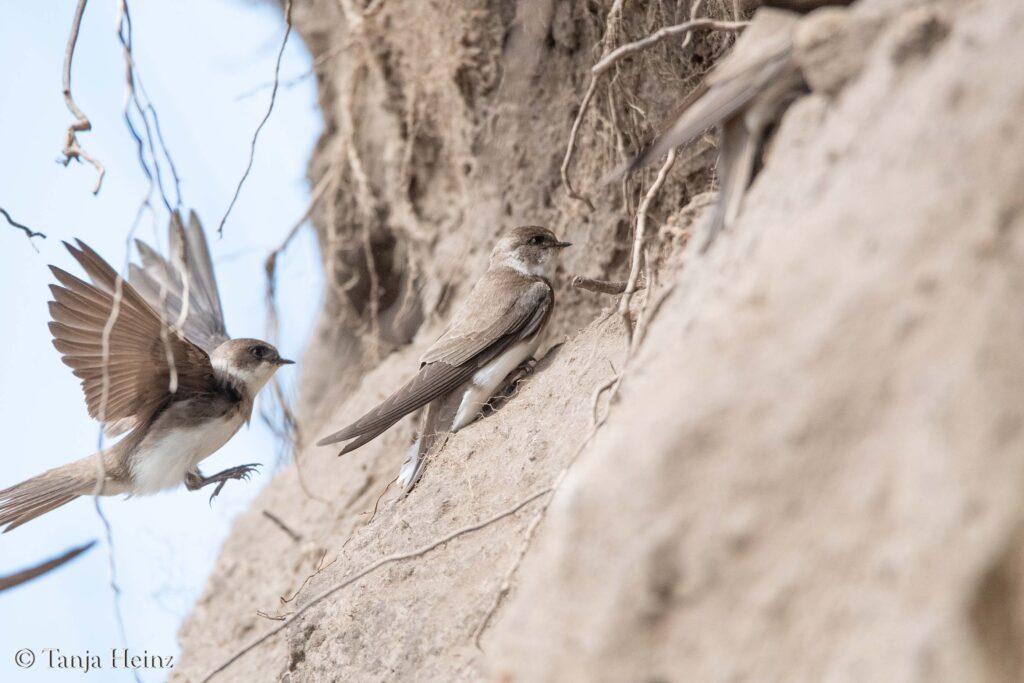
And this is exactly where humans come into play.
We too – especially as birdwatchers and nature enthusiasts – bear a great responsibility toward these sensitive sand martins.
In the next section, I would like to explore this in more detail.
Information: If you want to see where sand martins have already been spotted, it’s worth taking a look at eBird. Many birdwatchers have reported their observations there – and on the interactive map, you can track exactly where the species has been documented.
Watching nesting holes? Please read!
One aspect of birdwatching that I don’t want to leave unmentioned is the great responsibility we have towards the animals – especially when observing them in sensitive places like their nesting holes. Here, consideration is not a courtesy but a necessity.
Before writing this post, I spent a long time thinking about whether I should mention the steep bank area on the island of Poel (though one could have just googled it). During my observations, I was mostly alone, but occasionally hikers passed by. Maybe they weren’t that interested in the sand martins? In the end, I decided to mention the area – but not without clearly emphasizing what really matters:
Birdwatching requires respect – especially during the breeding season.
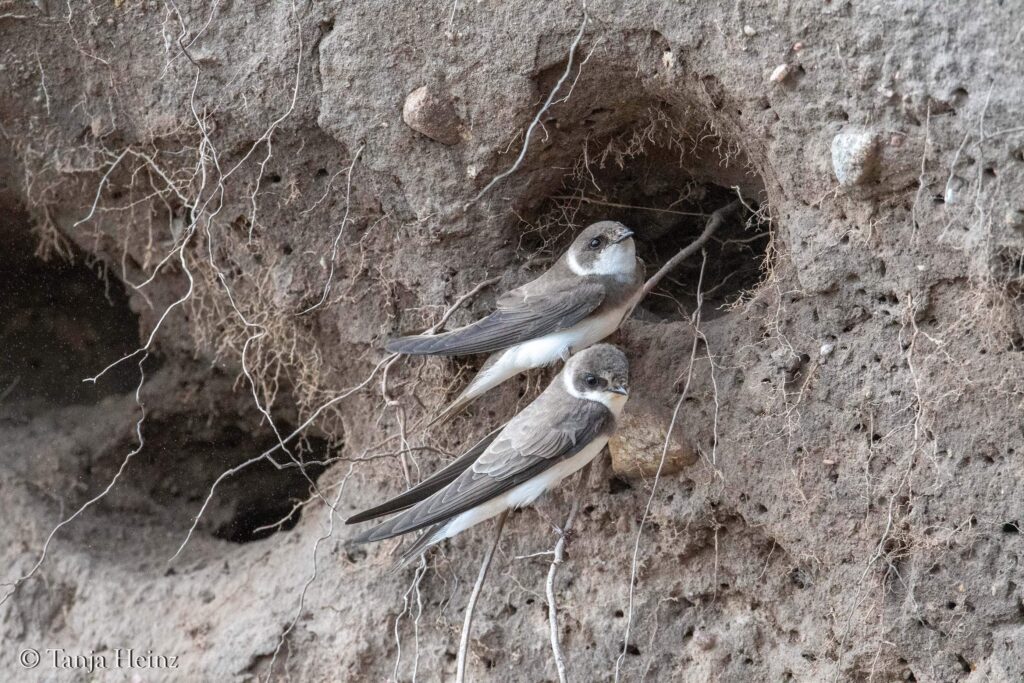
Disturbances can have serious consequences: many birds are extremely sensitive to approaches during the breeding season and may abandon their clutch in the worst case.
In the end, it is precisely those who observe with patience and mindfulness who are rewarded with the most beautiful moments. Because it takes both: patience – to wait until sand martins leave or return to their burrows – and consideration – because if they feel too much disturbance, they may withdraw and perhaps never come back.
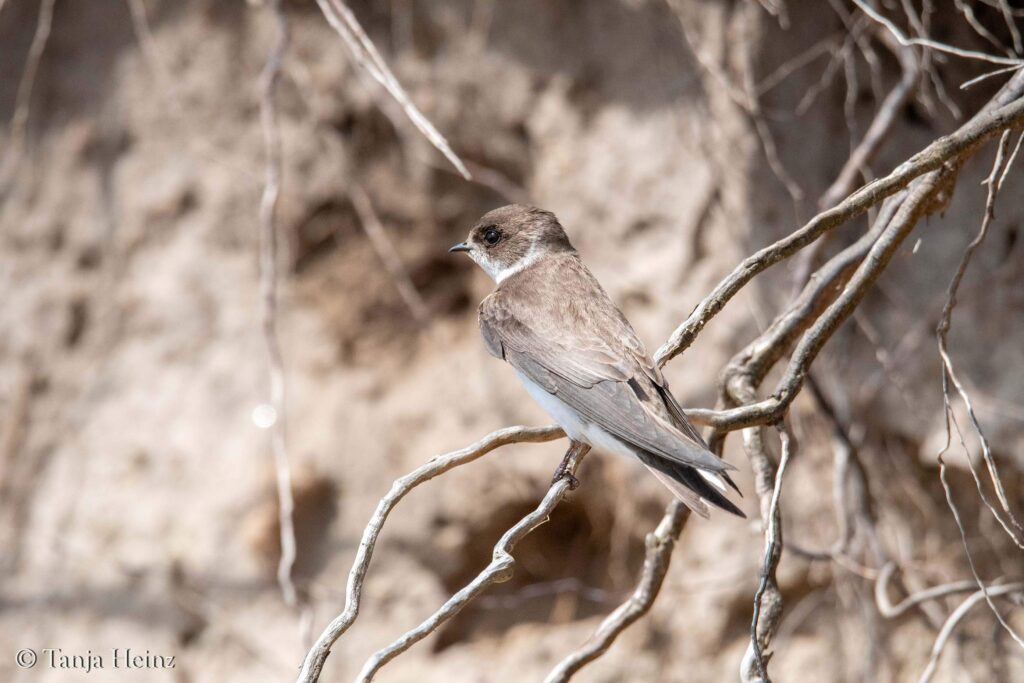
I decided to write about the steep banks on the island of Poel because observing sand martins is something deeply moving for me. And I hope that even more people will become enthusiastic about these fascinating birds. Because besides insect decline and habitat loss, it is above all human ignorance that is harming many species – not just the sand martins.
I am convinced: We only protect what we know and love. That’s why it’s important to share knowledge and enthusiasm – in the hope that it spreads further. Maybe with this post, I can reach a few people who are just as passionate about these little aerial artists – and maybe inspire others in turn.
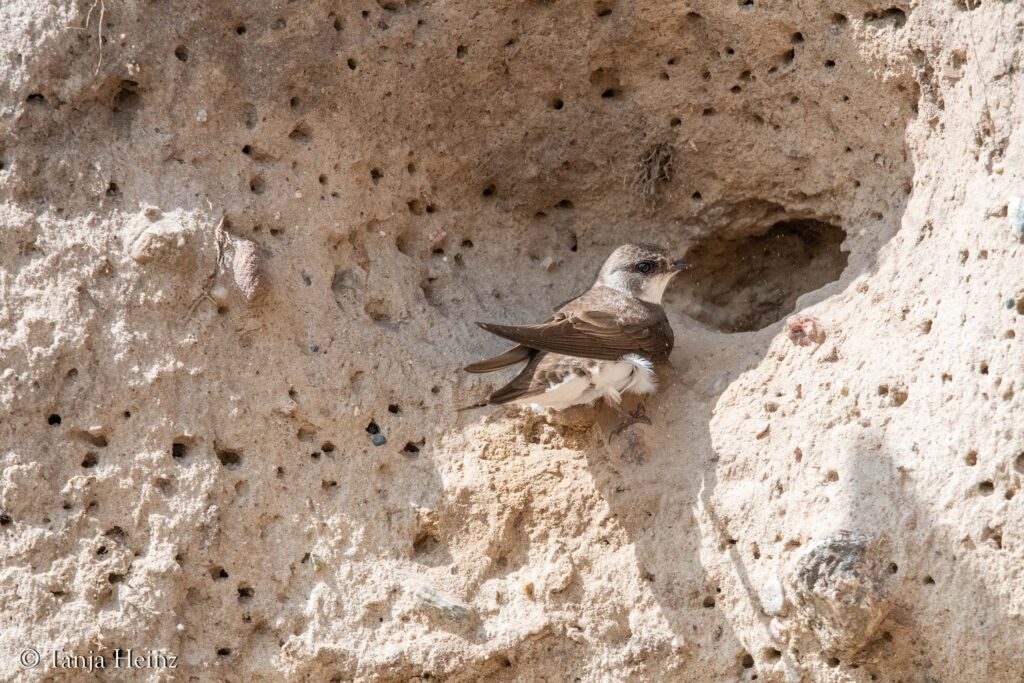
And what can you do to avoid disturbing the sand martins?
- Keep your distance: Observe the birds from a safe distance – binoculars or a telephoto lens can help.
- Don’t block access: The direct path to the nesting hole must remain clear.
- Be brief and quiet: Don’t stay too long, avoid loud noises, and move calmly.
- No touching: Nests, eggs, or young birds must never be touched.
- Avoid group gatherings: Large crowds cause stress for the animals.
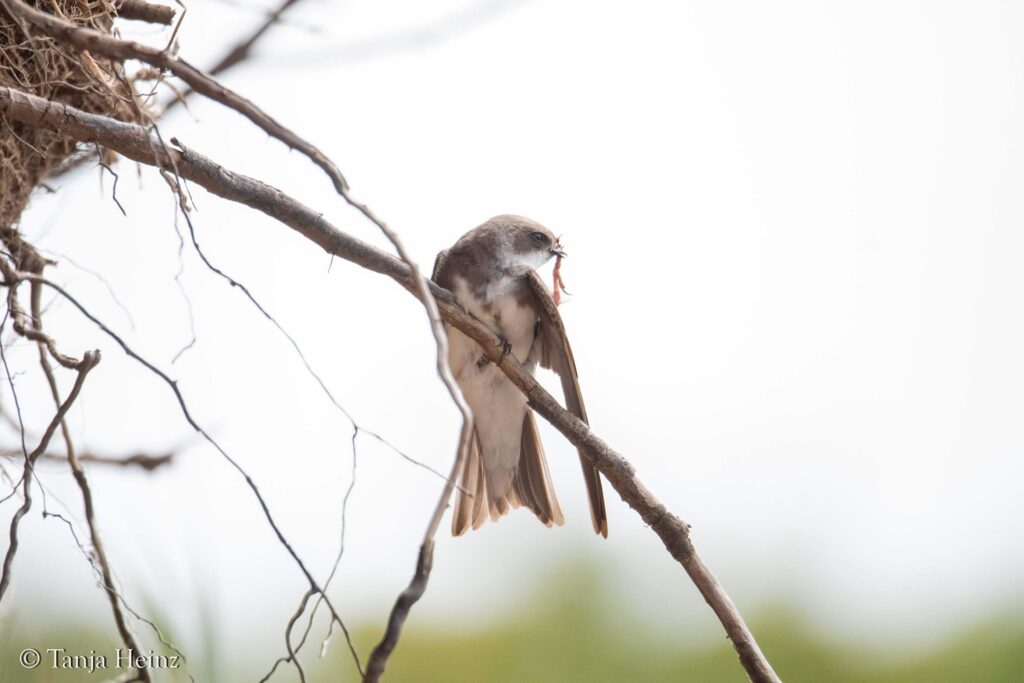

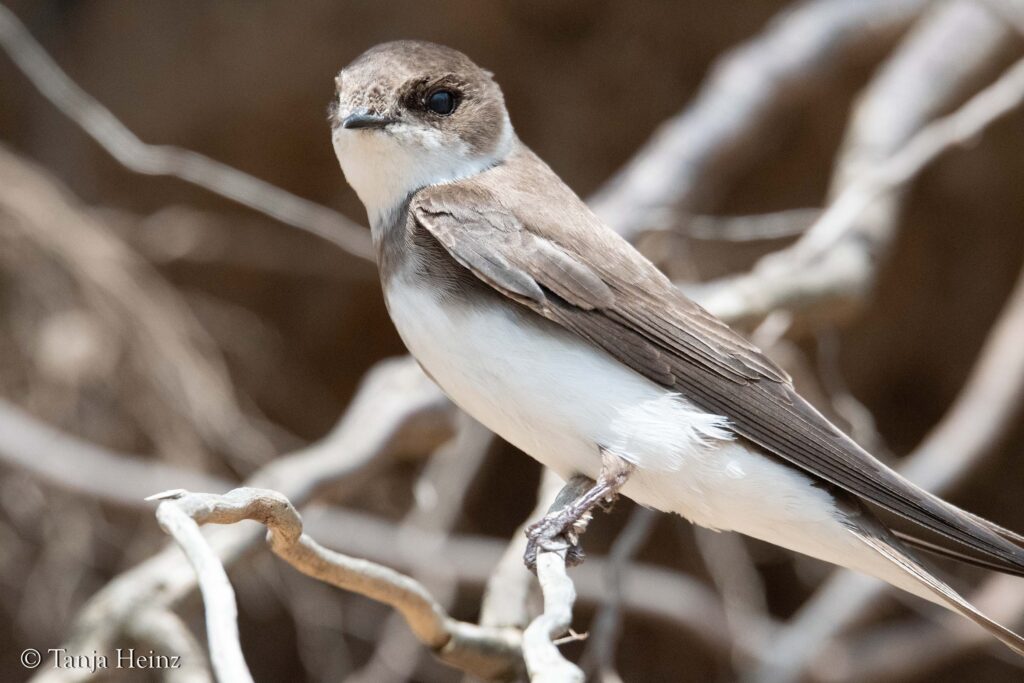
Important: Anyone who wants to watch birds also carries responsibility. With a bit of consideration and attentiveness, both can be combined: impressive nature experiences and effective protection.
Exploring by bike
Before I conclude, I would like to share some photographic impressions of the landscapes I encountered on my bike tour.
The island of Poel is connected to the mainland by a road – so traveling by ferry is not necessary. For me, the bicycle was the ideal choice: it allowed me to stop flexibly, consciously take in the surroundings, and take a few photos.
However, I had to remind myself again and again not to stop too often or for too long – after all, my main goal was the sand martins. That’s why the photo selection is limited but hopefully still gives a small impression of the scenic beauty between Wismar and the island of Poel.

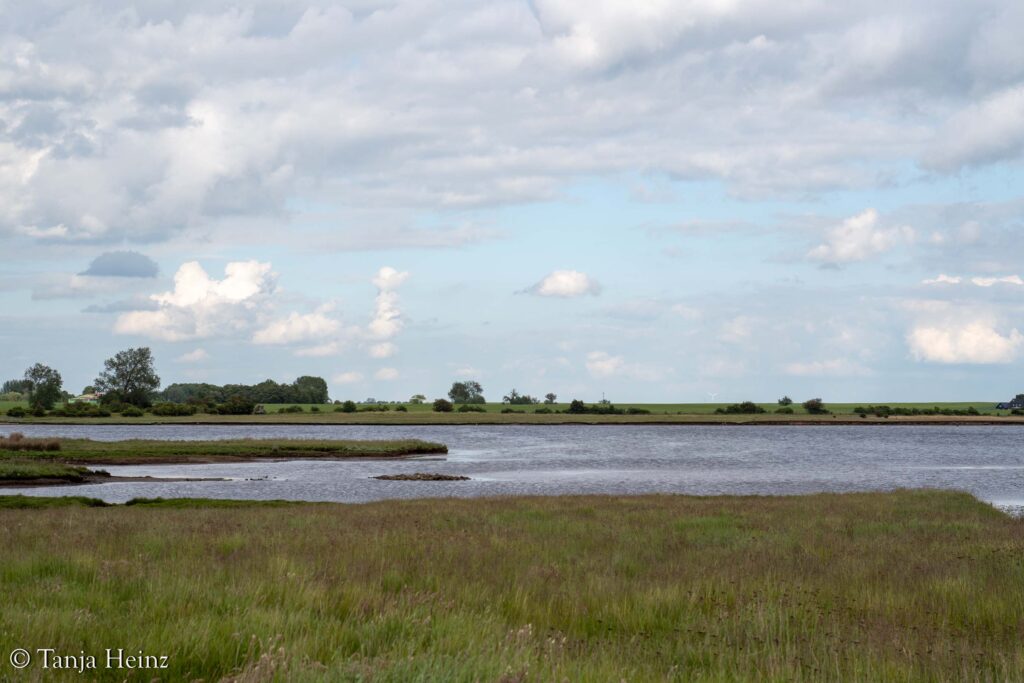
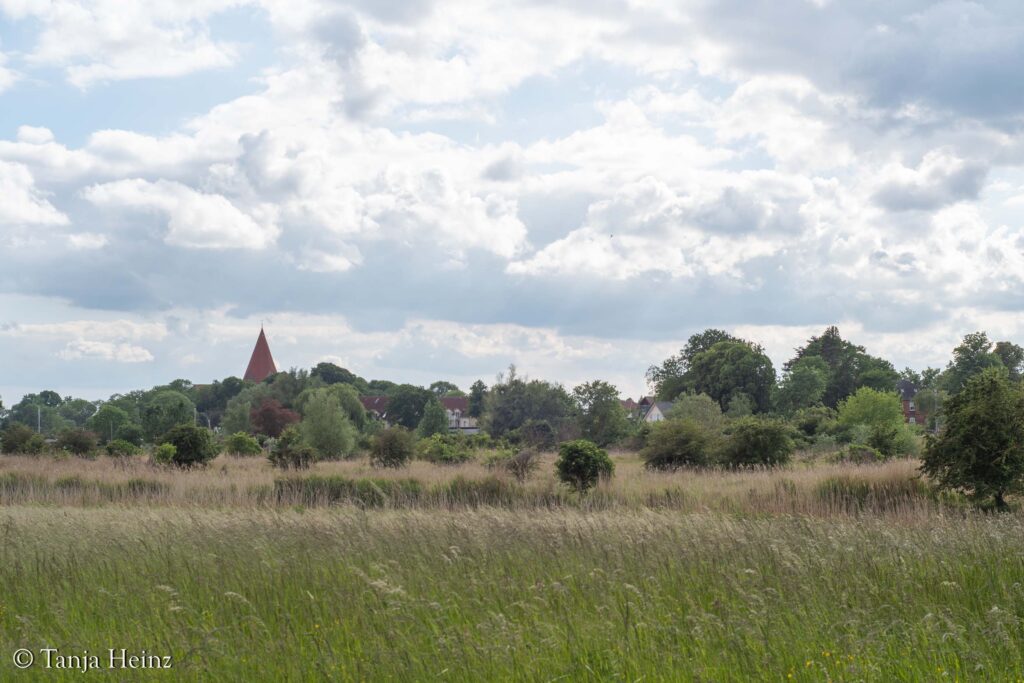



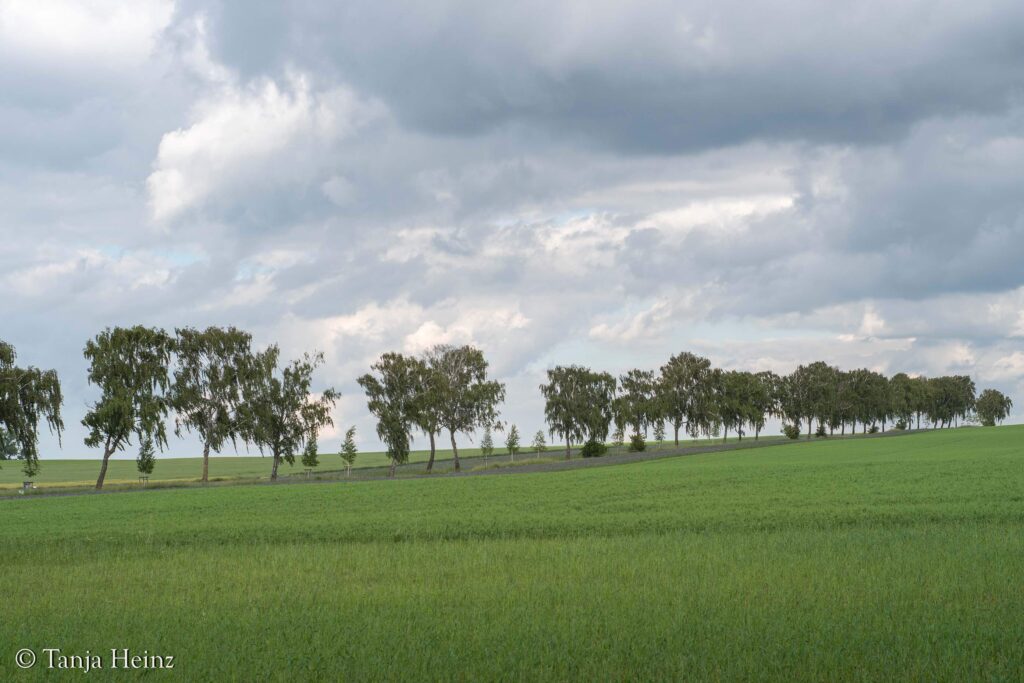
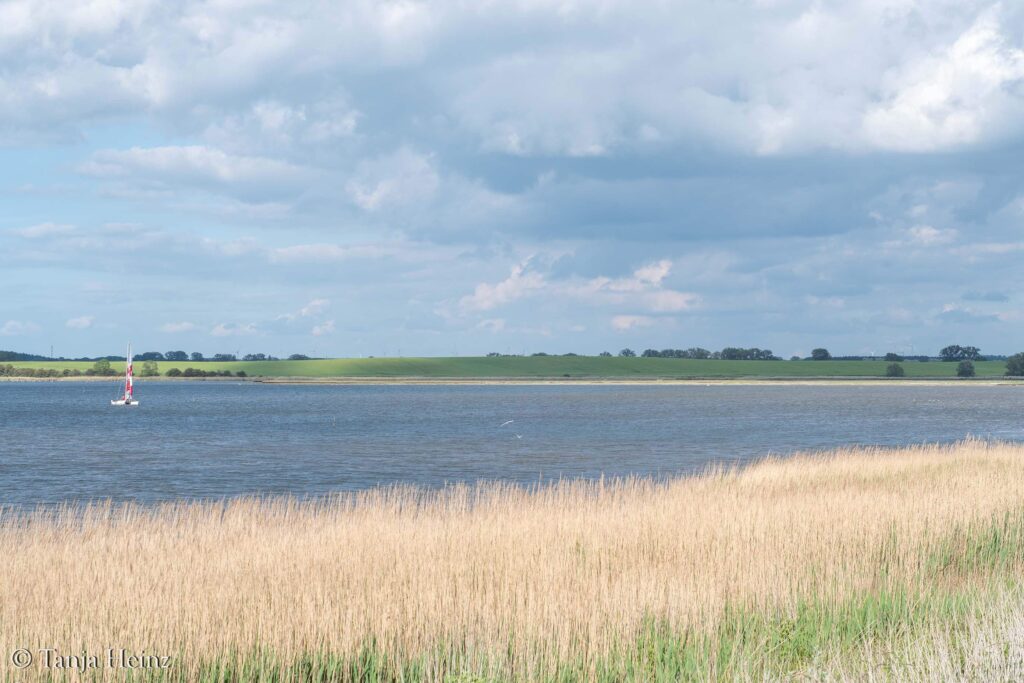
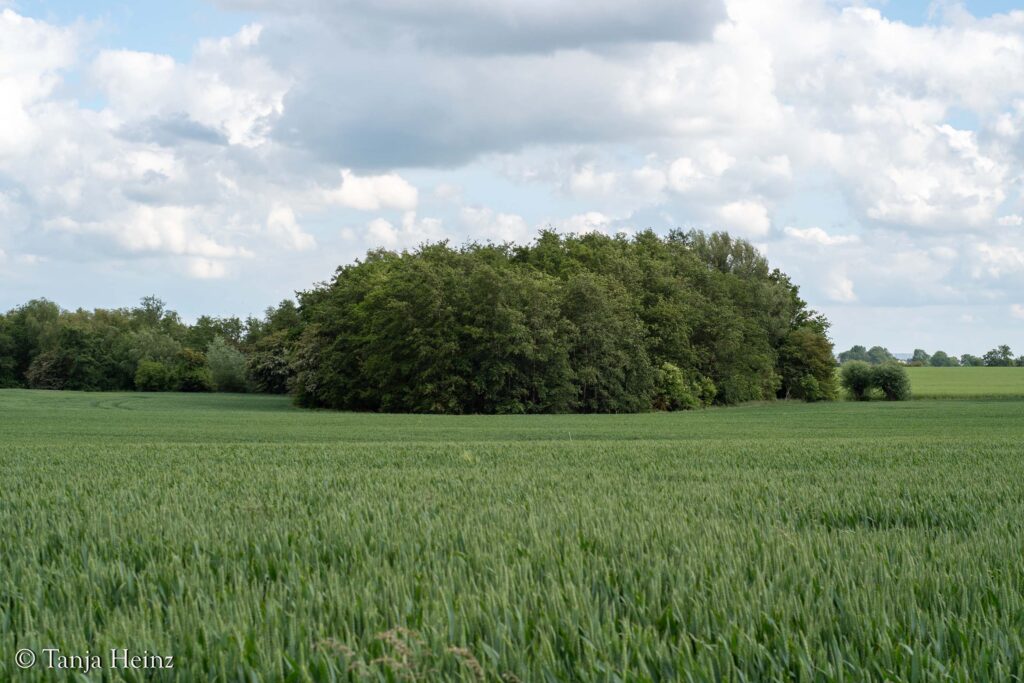
Information: If you want to know where you can spot grey seals and harbor seals near Wismar, feel free to check out my next blog post.
More informationen
DataZone on the BirdLife website
Sand martins on eBird
Sand martins on the Red List
Sand martins on Wikipedia
Beautiful video about the sand martins on the island of Poel (in German)
Do you know the sand martins on the island of Poel? Or have you ever seen sand martins somewhere else? Let us know in the comments.


